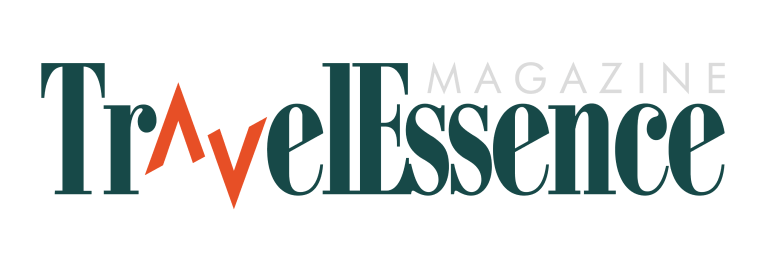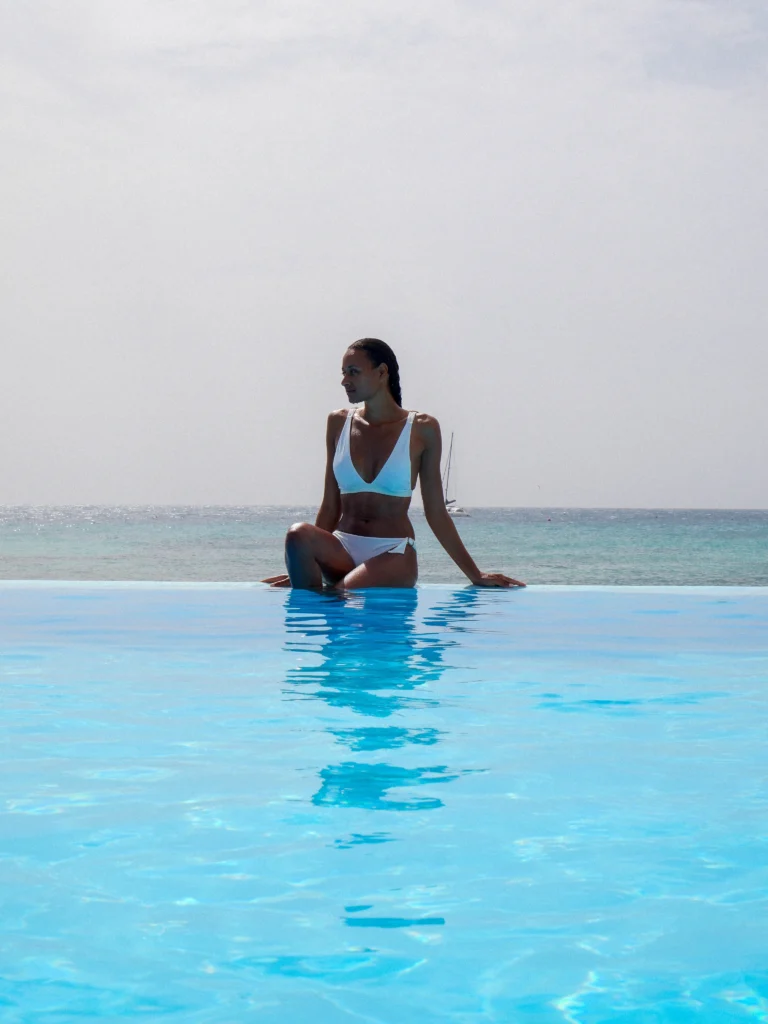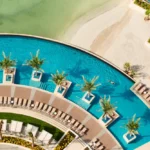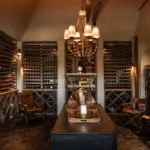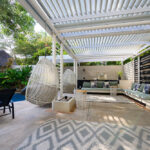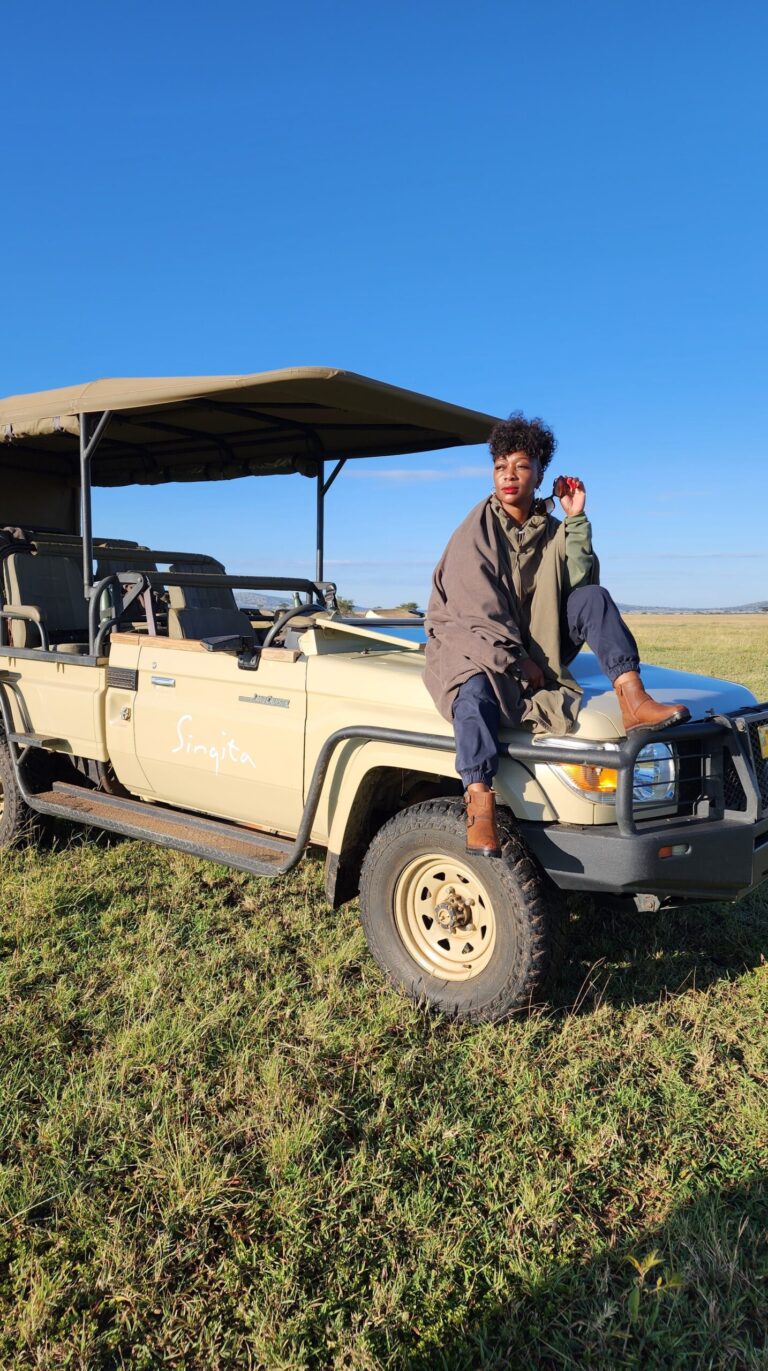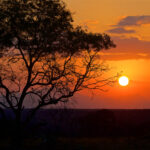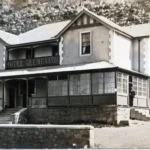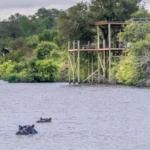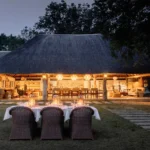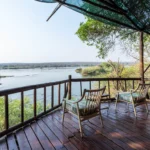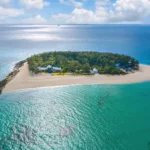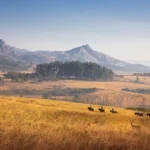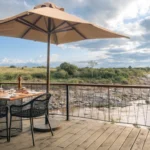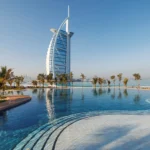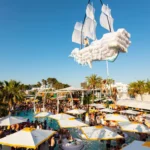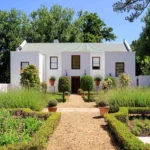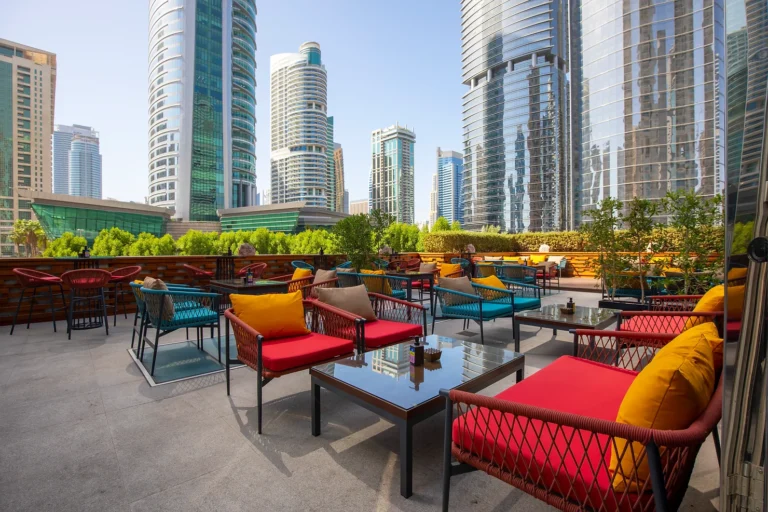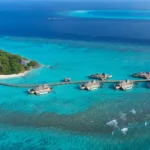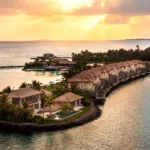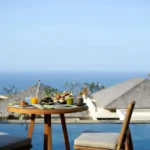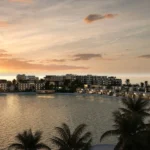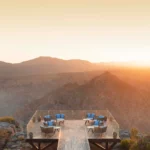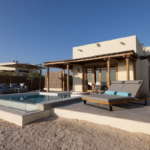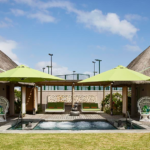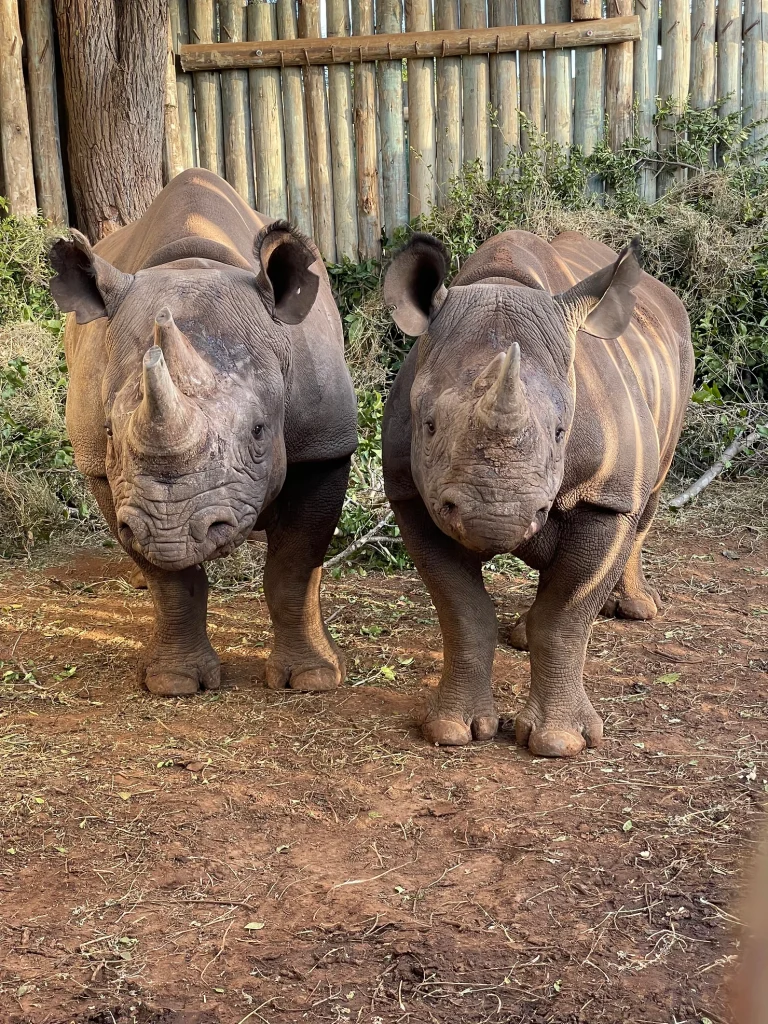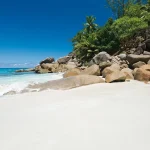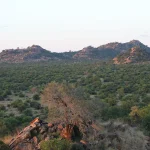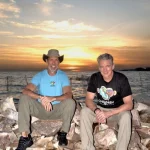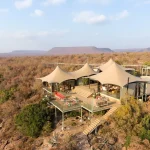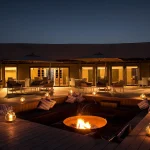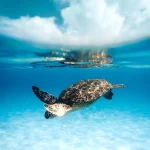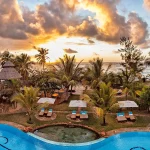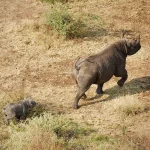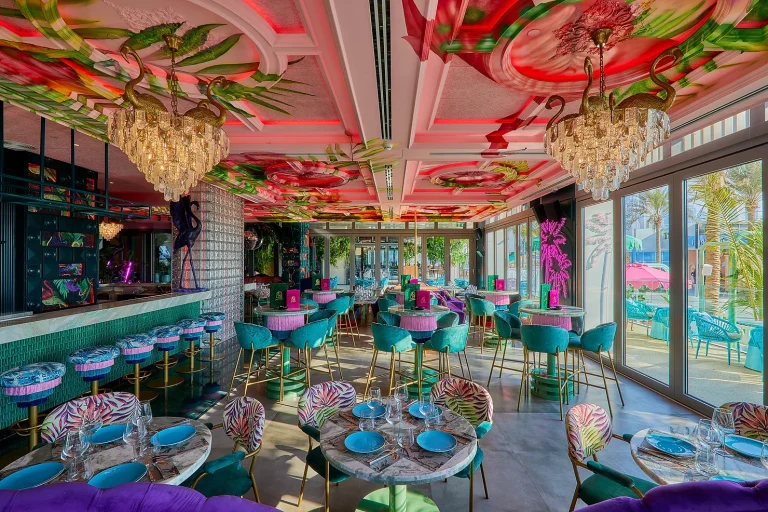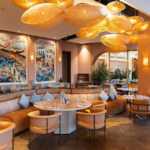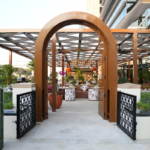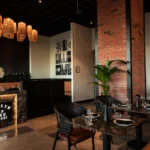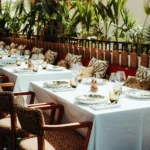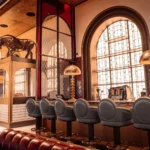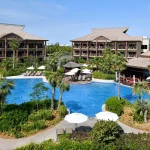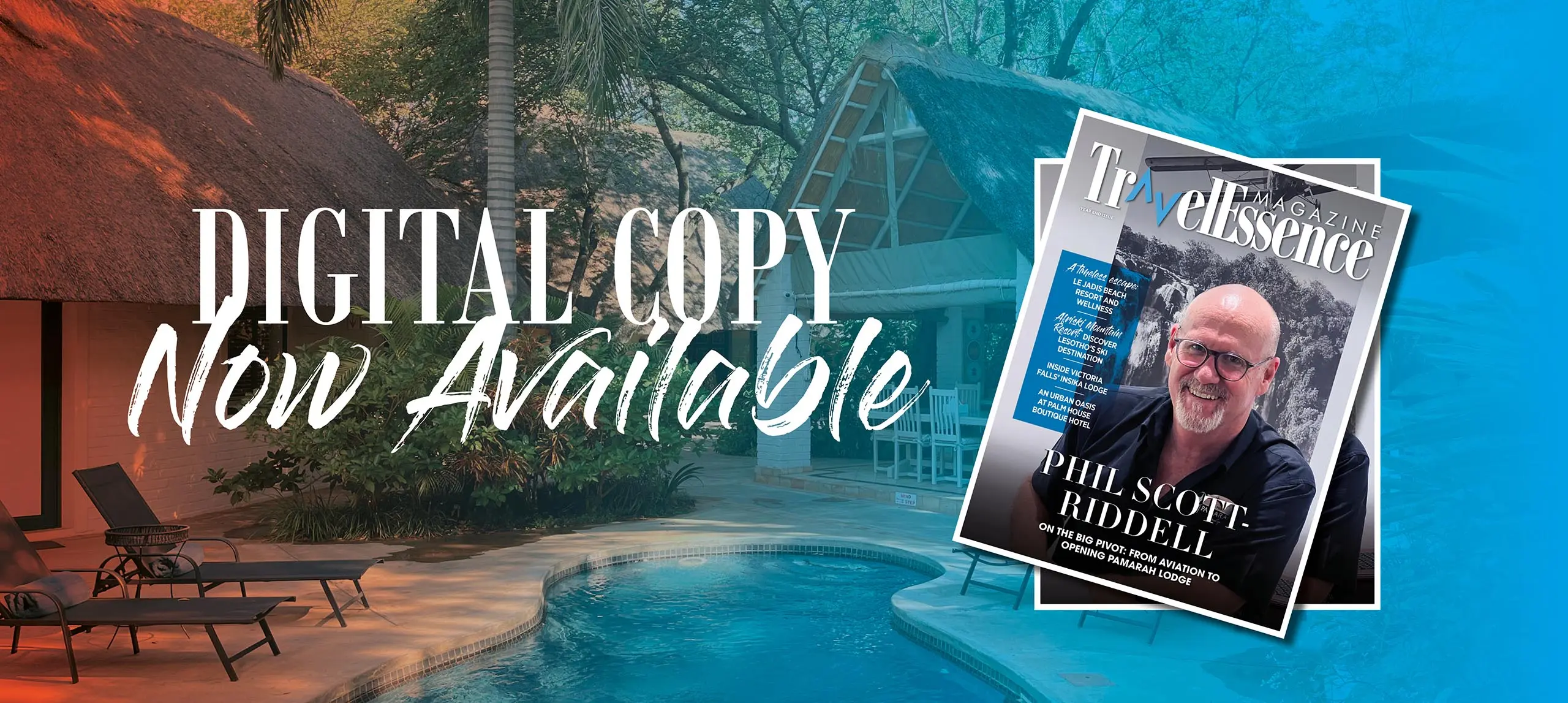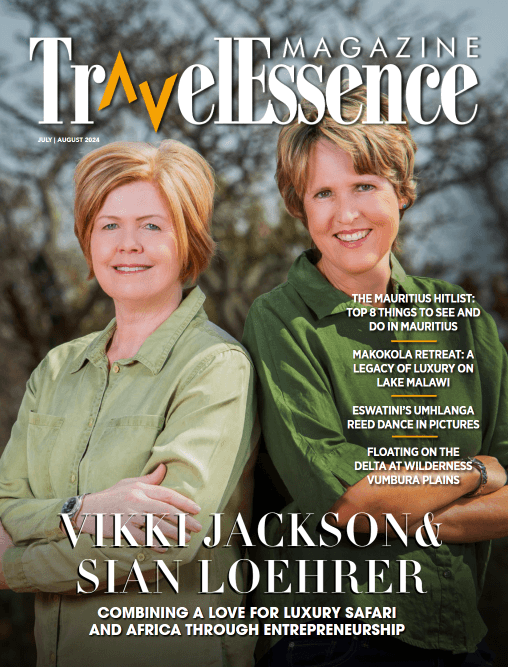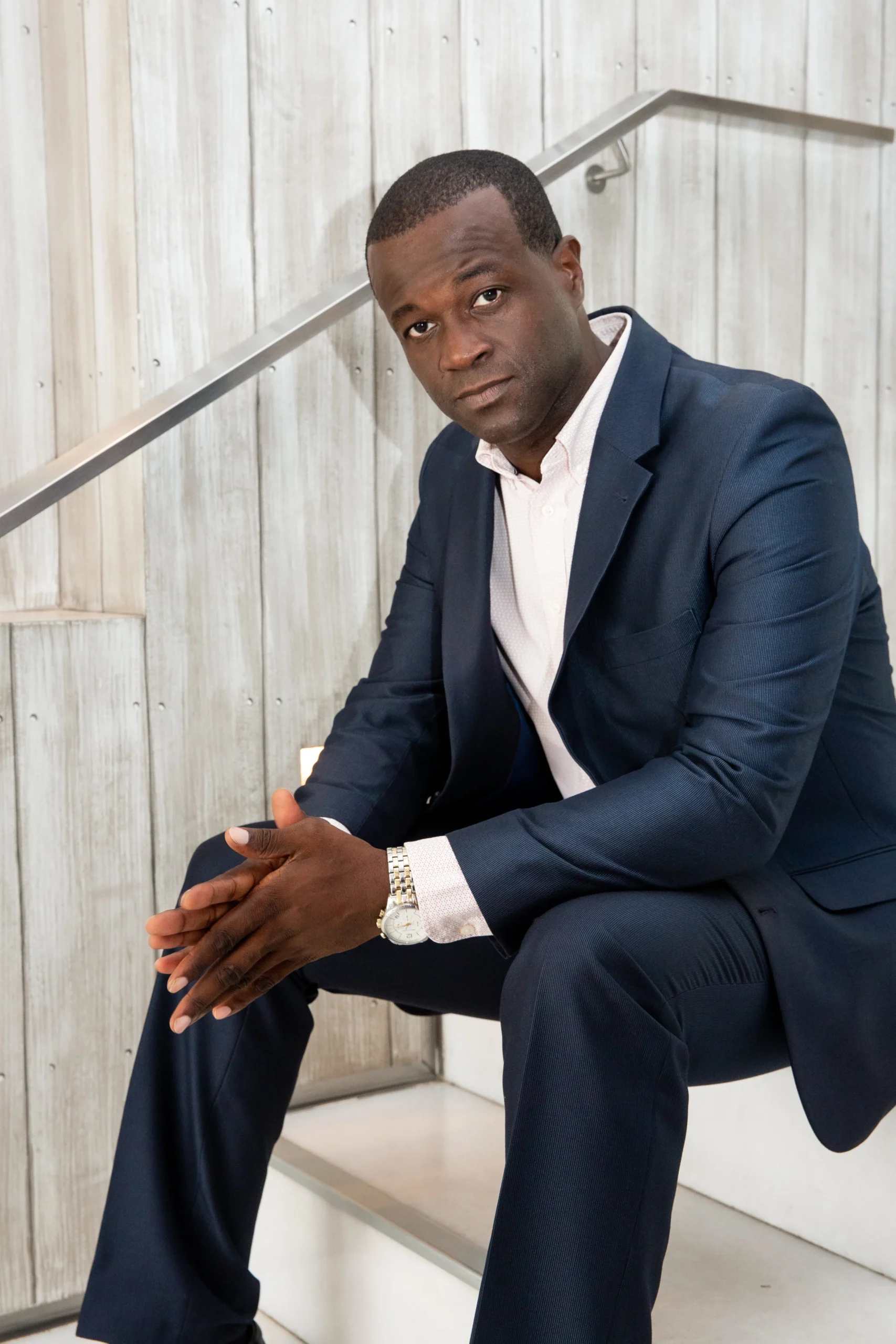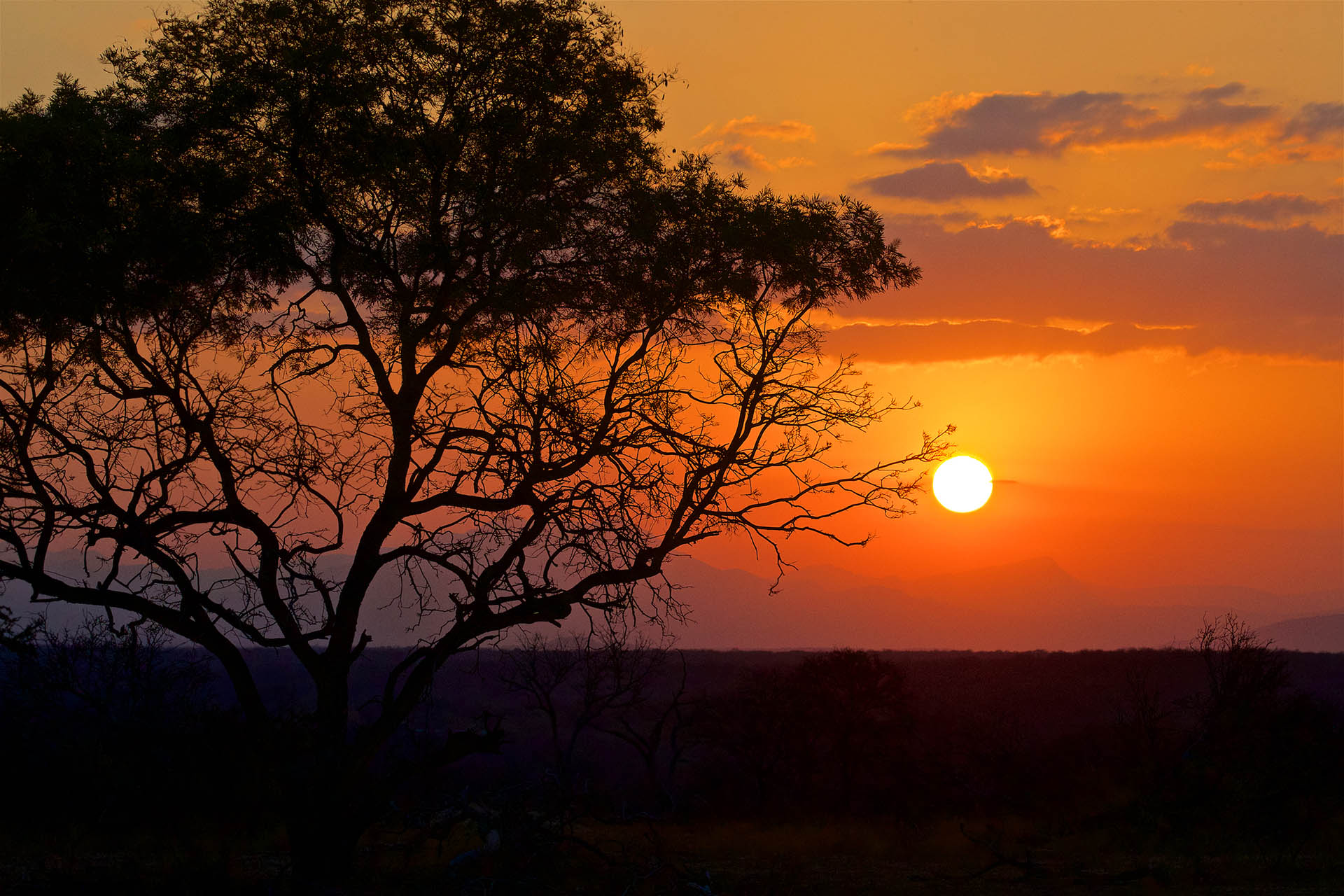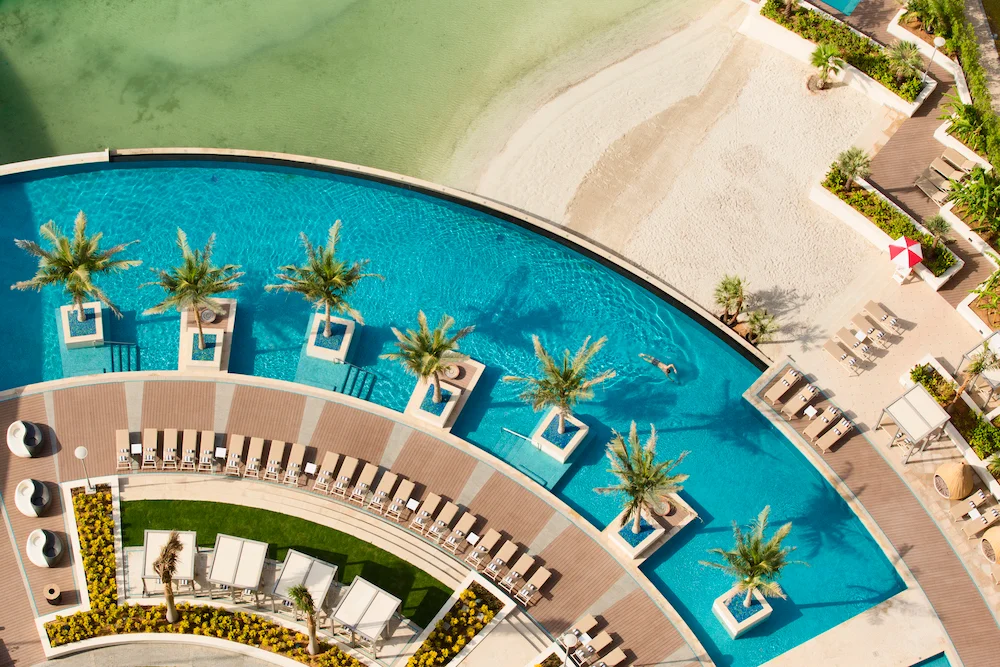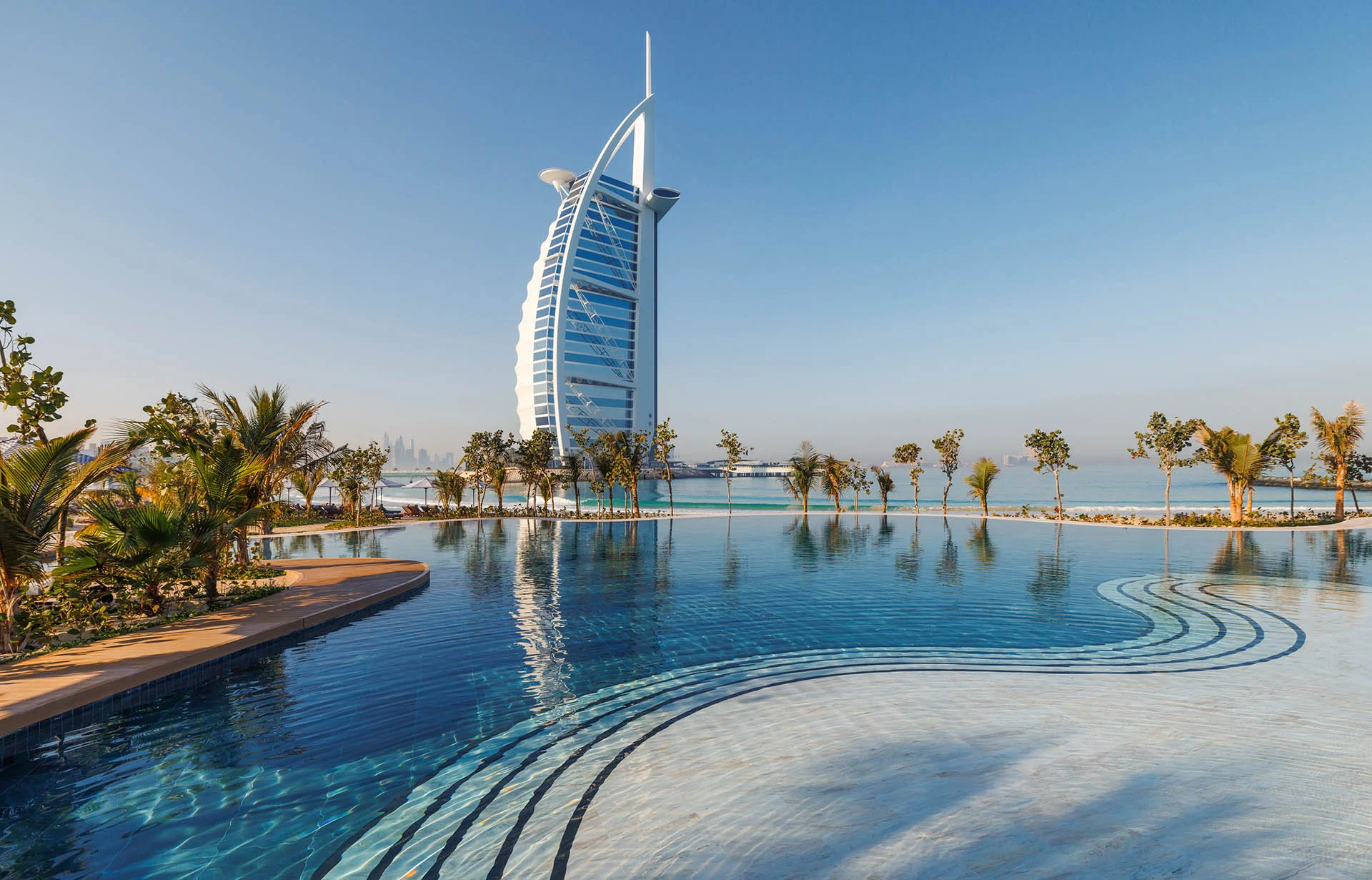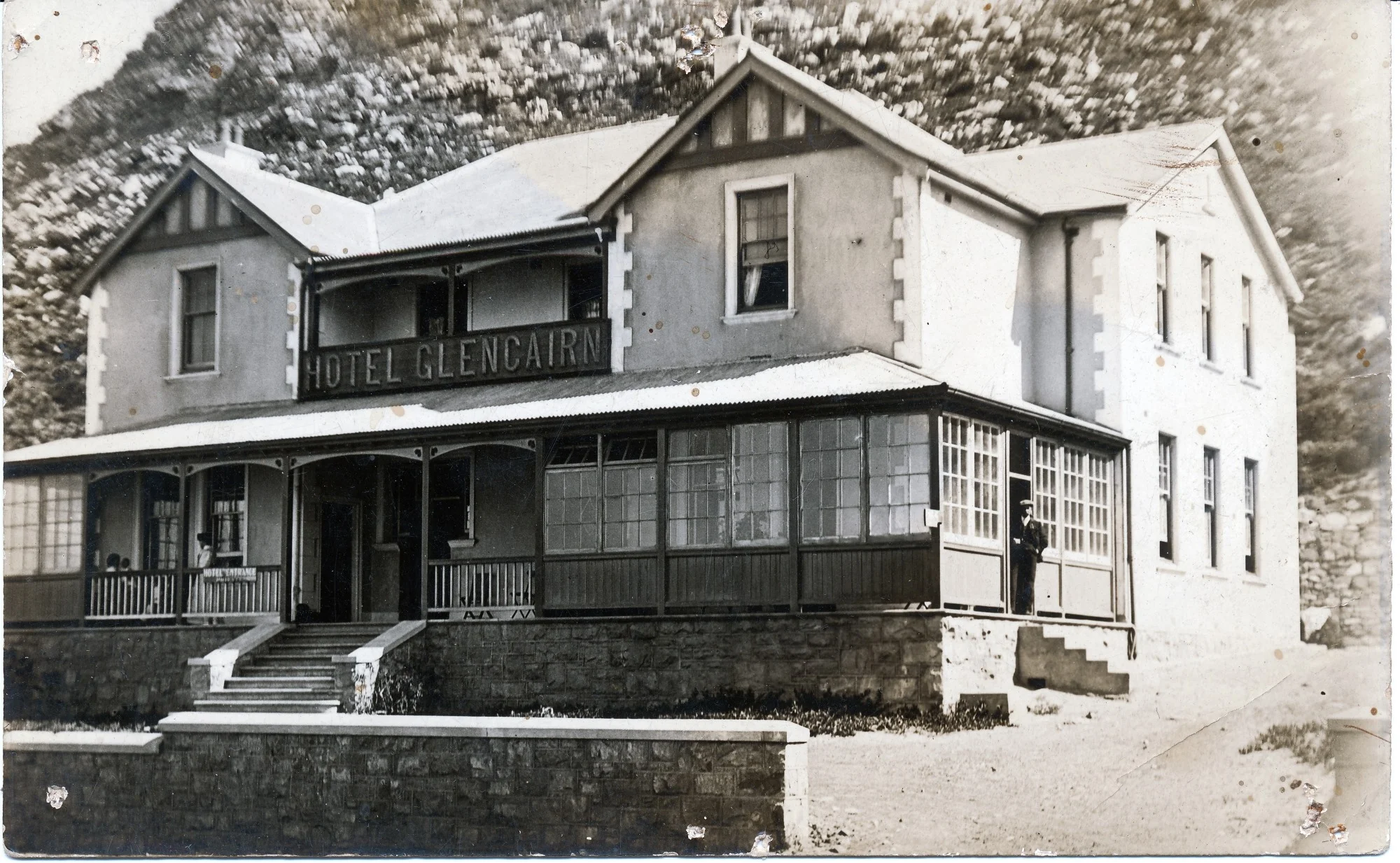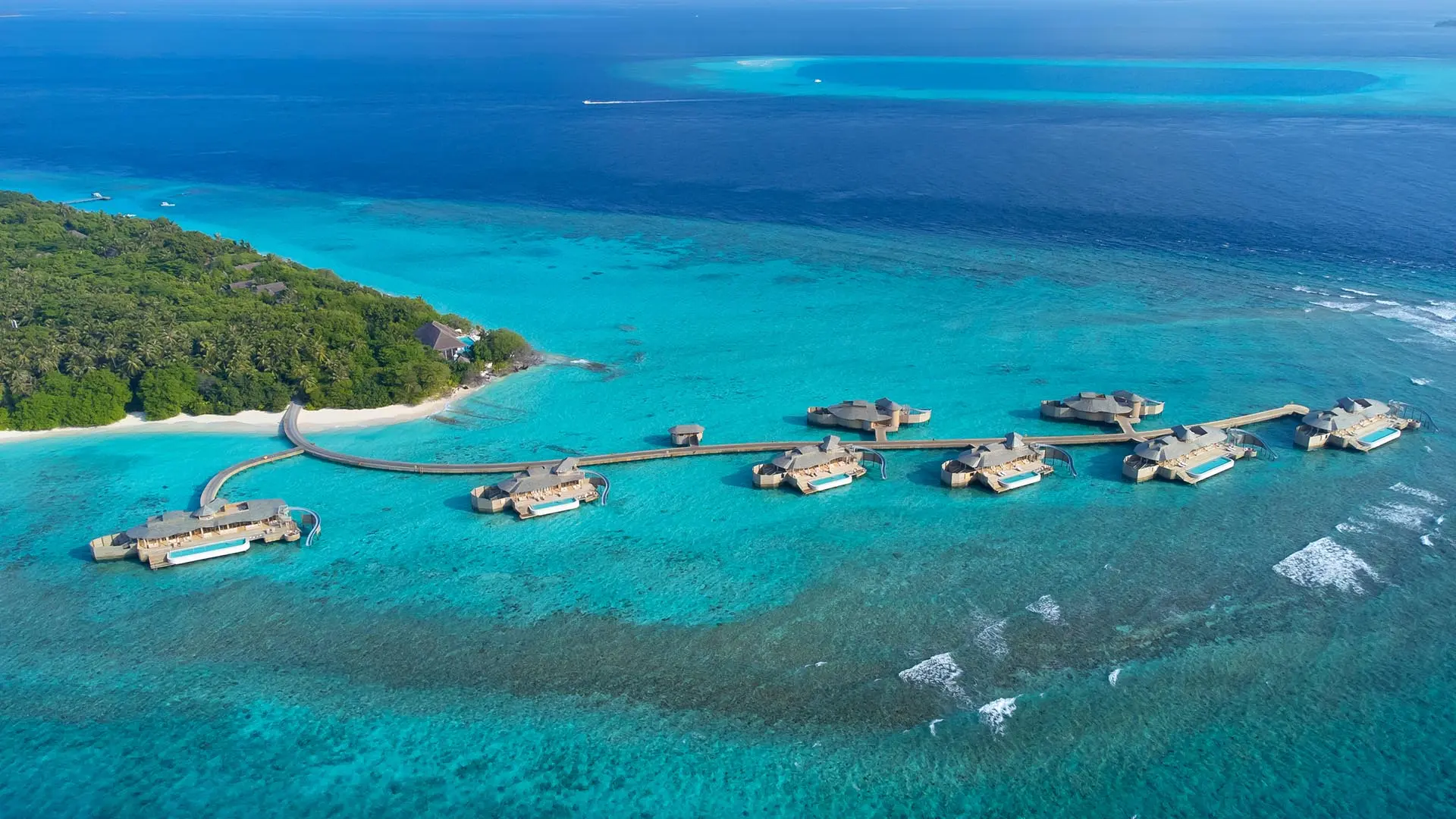Words by Sarah Kingdom
Fresh off my flight into Fez, I fell instantly in love with Morocco. Its bustling souks, ancient medinas and fortified kasbahs, its rugged mountains, barren deserts and golden beaches. As I would soon discover, Morocco is a country of dazzling diversity, a rainbow of colours, an orchestra of sounds, and a symphony of smells.
Fez is Morocco’s oldest imperial city and time seems to stand still here. The high-walled medina is the most complete medieval city in the Arab world and its tangle of over 9,000 narrow alleyways housesa jumble of souks, riads, artisan workshops, leather tanneries, mosques, and palaces, many of which are more than 1,000 years old. With so much history, it should come as no surprise thatthe dynamic Fez medina is a UNESCO World Heritage Site.
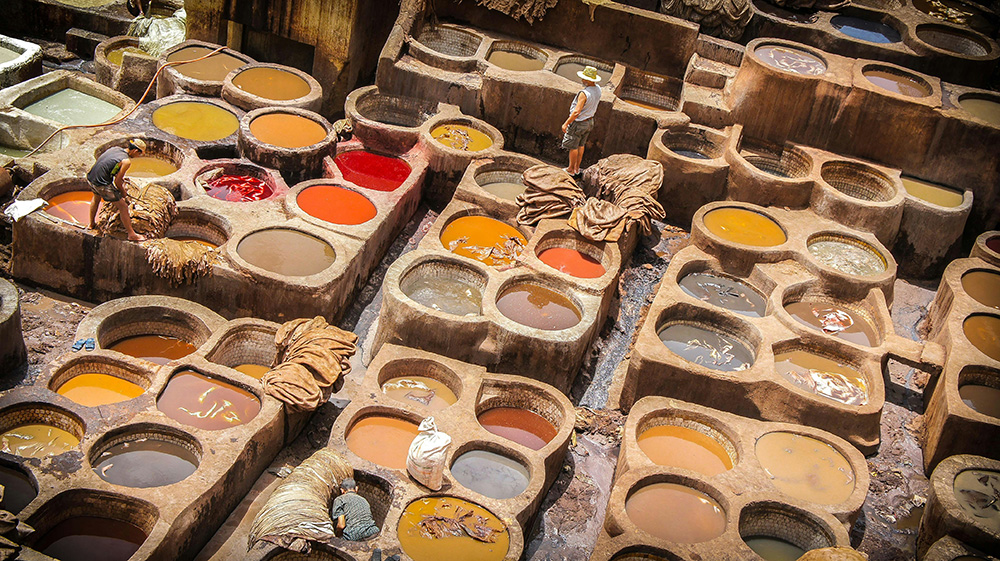
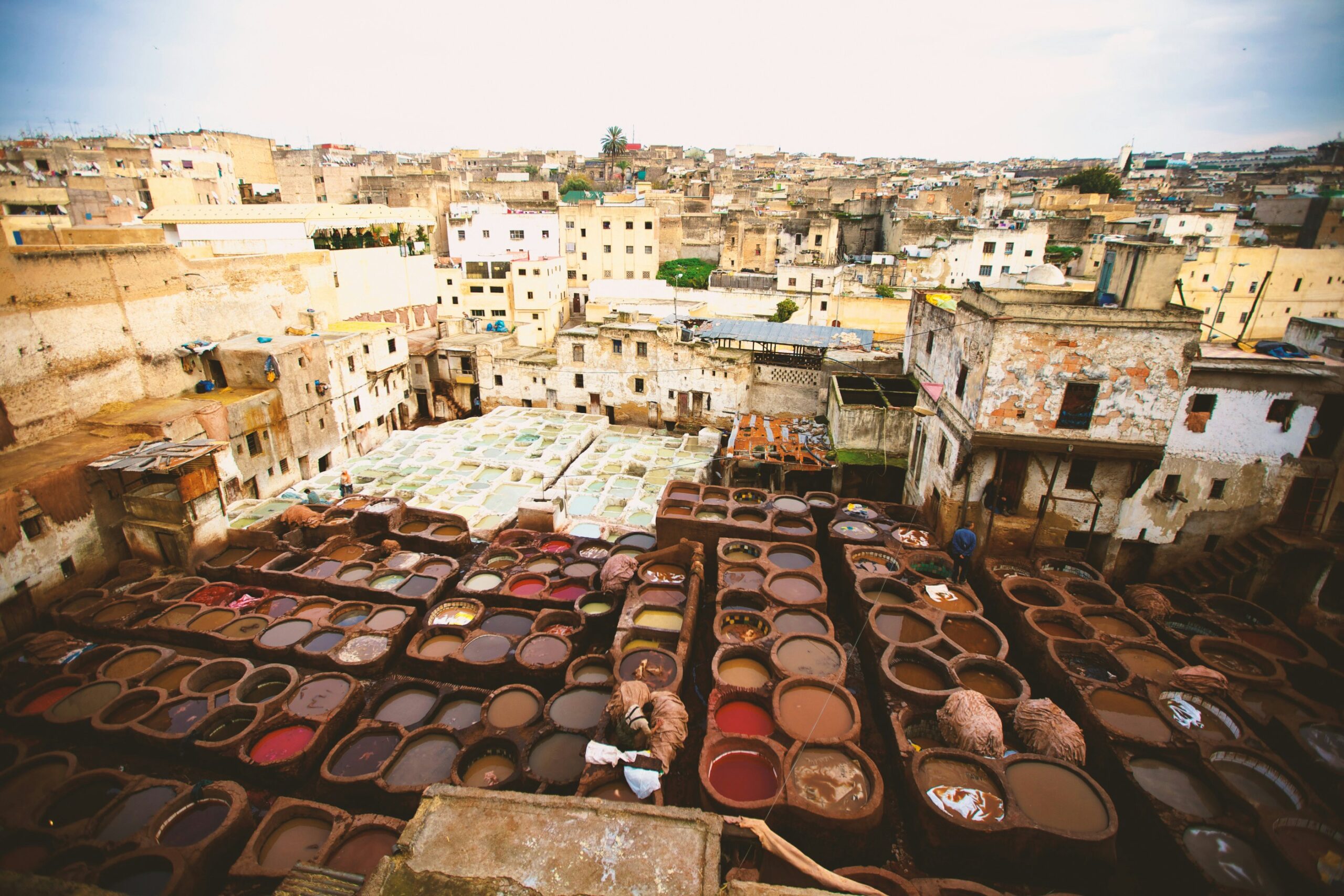
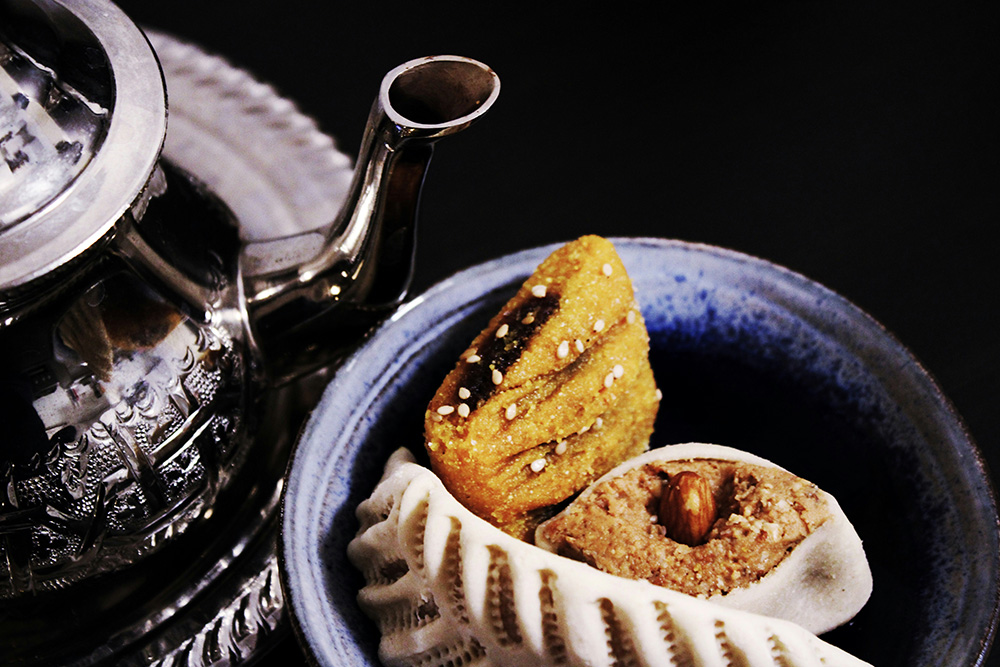
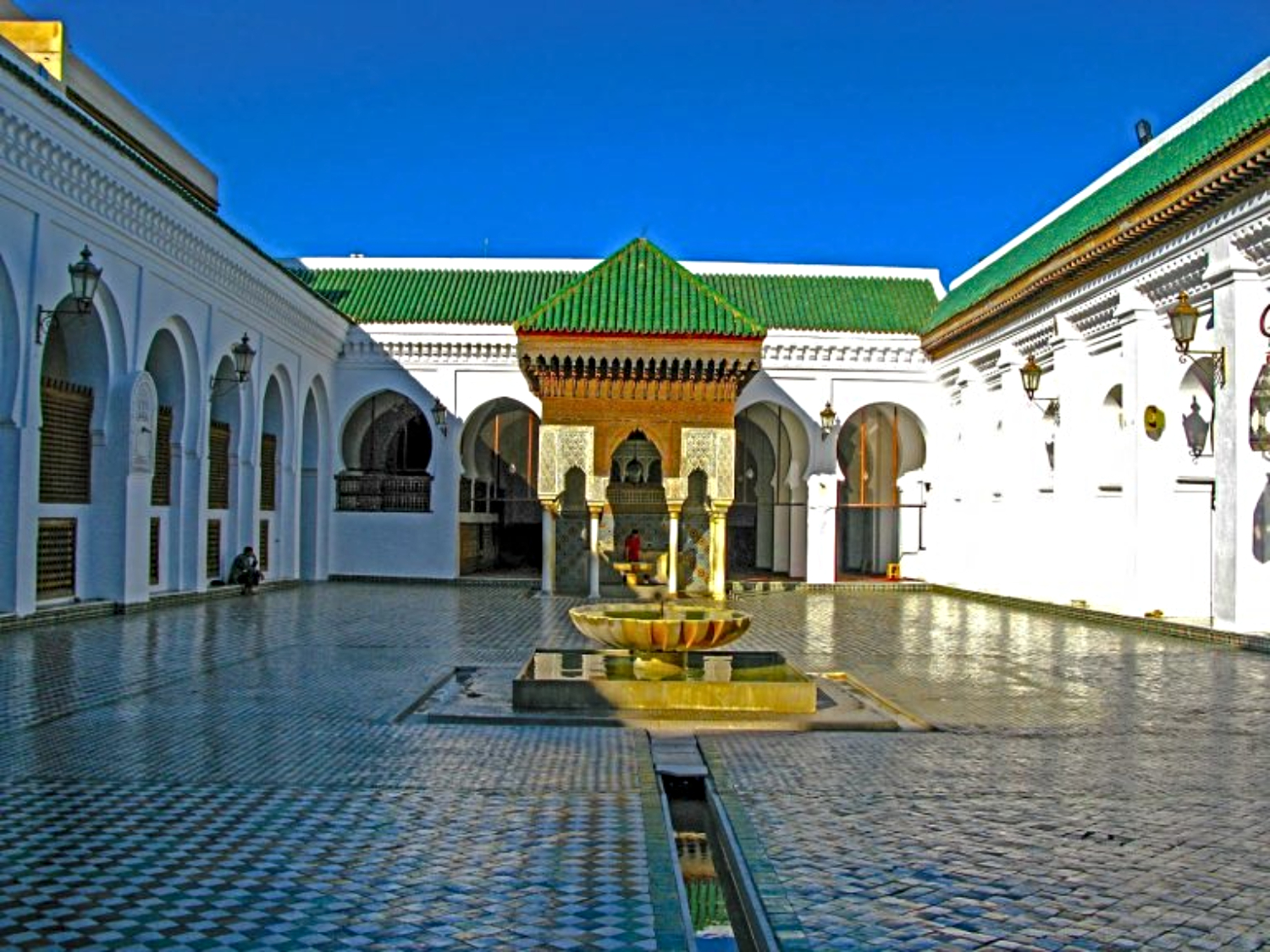
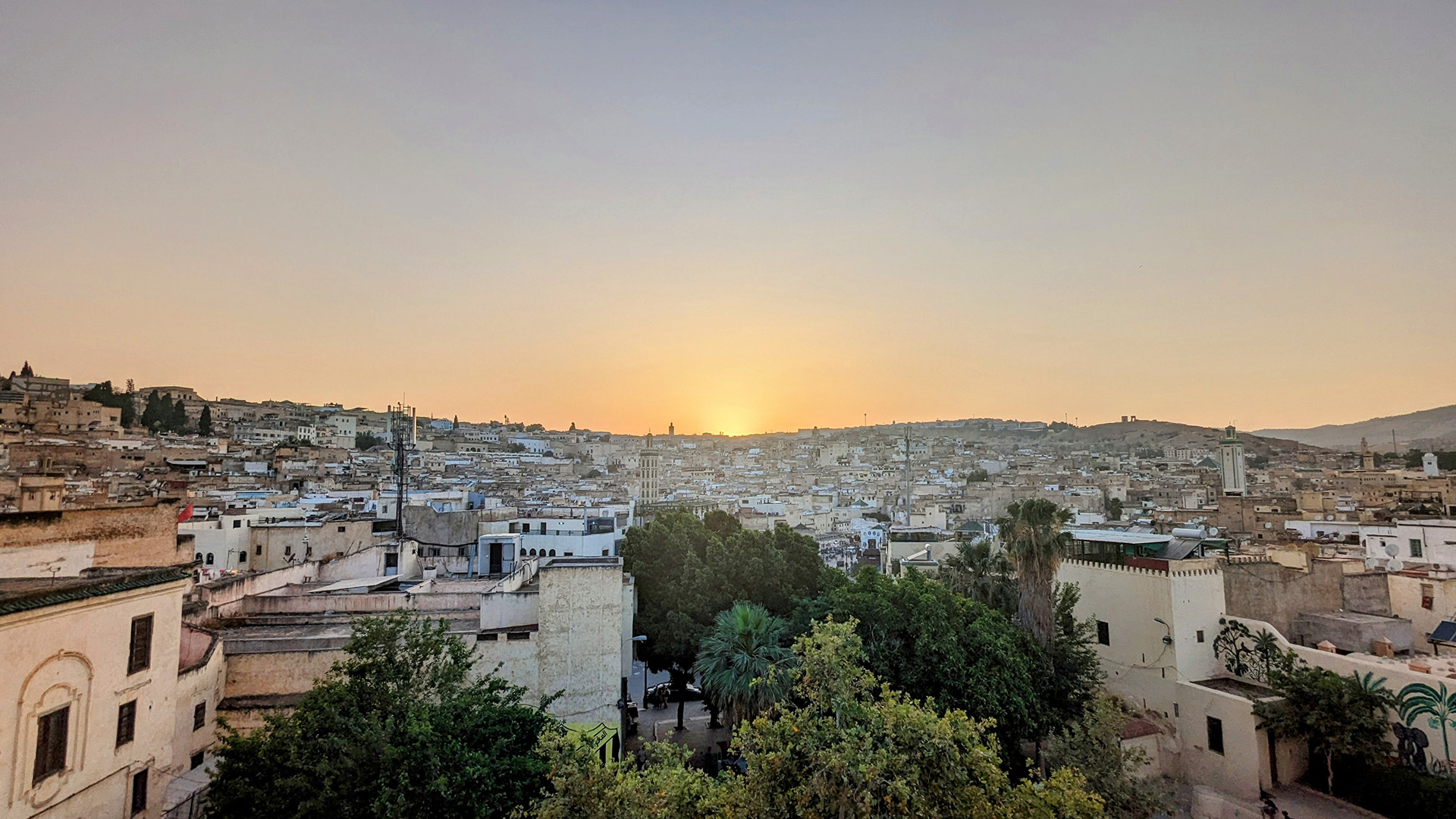
I travel with my taste buds, so for me, the highlight of Fez was its food. This is Morocco’s undisputed food capital. The market stalls are laden with fresh local produce, the street food is incredible, and the dining options areendless, from tiny tea medina shops to elegant rooftop restaurants. I took a food tour of the medina and ate my way through fresh local breads, sheep and goat cheeses, a thousand varieties of olives, and harira soup made from chickpeas, herbs and spices.I drew the lineat snail soup and boiled sheep’s head, but did round it all off with some delicious chebakia, a deep-fried dough, coated with sesame seeds and honey.
I spent days exploring the medina – the Kairaouine Mosque, the world’s oldest continuously operating university, theintricately designed Bou Inania Madrasa, the pungent leather tanneries, the Royal Palaces, the tiny local bakeries, and the peace and calm of the JnanSbil Gardens.
By night I retired to the Palais de Fes Dar Tazi, just a few steps from the medina. Three interlinked palaces, parts of which date from the 14th century, amalgamated into one glorious building, that looks out over the old medina. The hotel’s rooftop restaurant serves meals that pay homage to the culinary heritage of Morocco, including an incredible pigeon pastilla, a delicacy dating back to the 15th century, that is made of filo pastry, stuffed with rich, tender pigeon meat, aromatic spices and lightly scrambled egg and finished with a sprinkling of icing sugar and cinnamon.
In somewhat of a food coma, I left Fez behind and flew to Marrakech, located north of the foothills of the Atlas Mountains. The bustling city of Marrakesh needs no introduction, it’s probably the best-known city in all of Morocco. Its ancient medina is a maze of narrow streets, with the Djemaa El Fna, arguably Africa’s most famous square, at its heart. By day, the square is just a big open space, with a handful of snake charmers, monkey wranglers and some slightly menacing ‘tooth pullers’, who wield fearsome pliers and offer to extract the teeth of any sufferer of toothache. It’s late in the afternoon whenthe square really comes to life. People assemble for an early evening promenade, and the square gradually fills up,until it becomes a somewhat overwhelmingcacophony of storytellers, acrobats, musicians and entertainers; each one trying to get your attention and separate you from some of your holiday spending money.
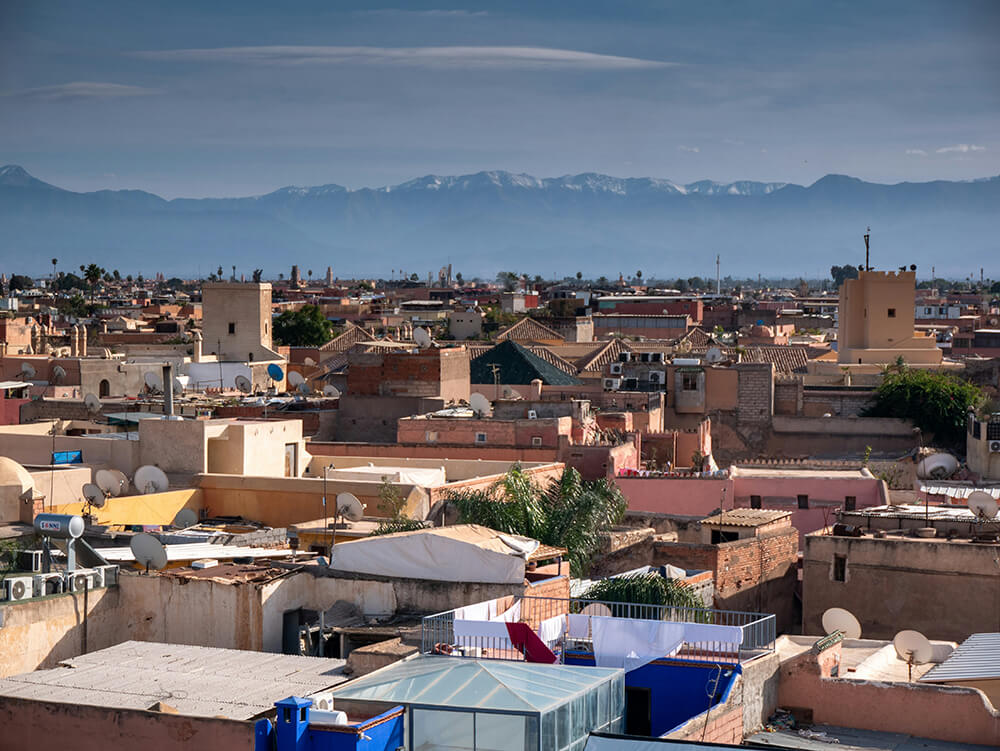
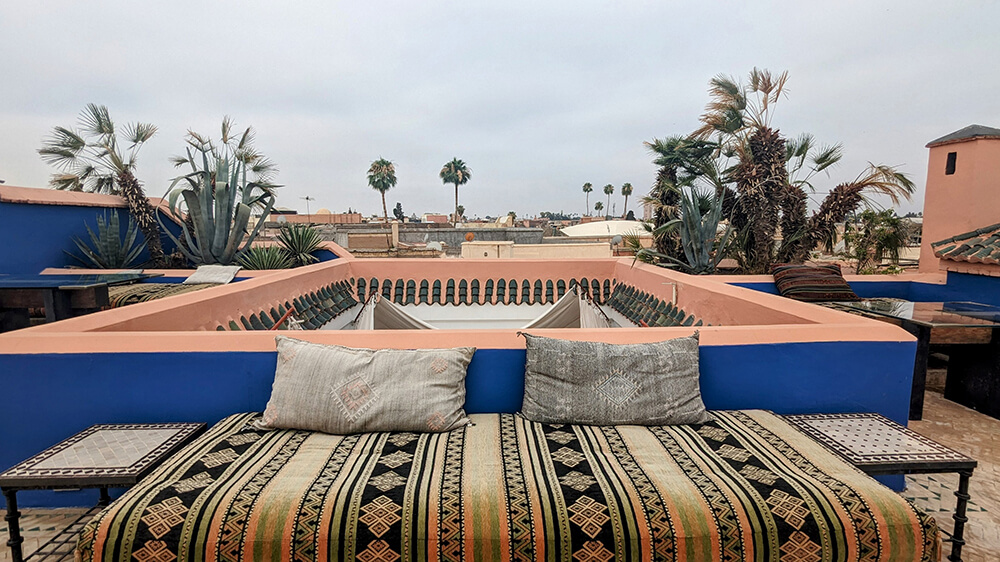
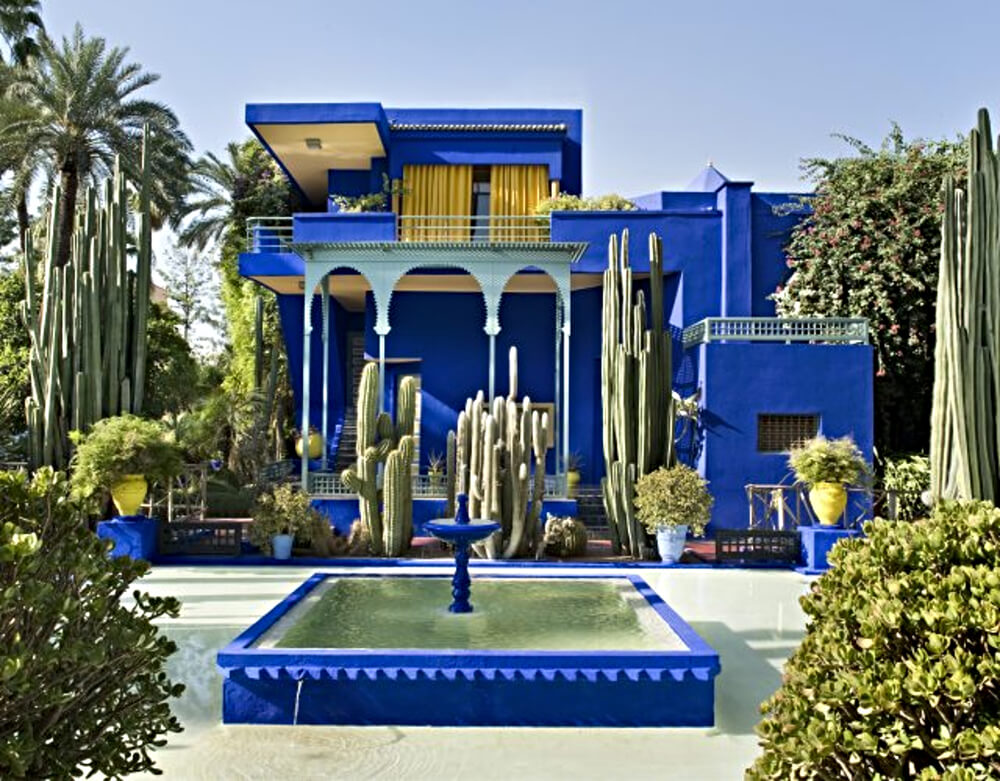
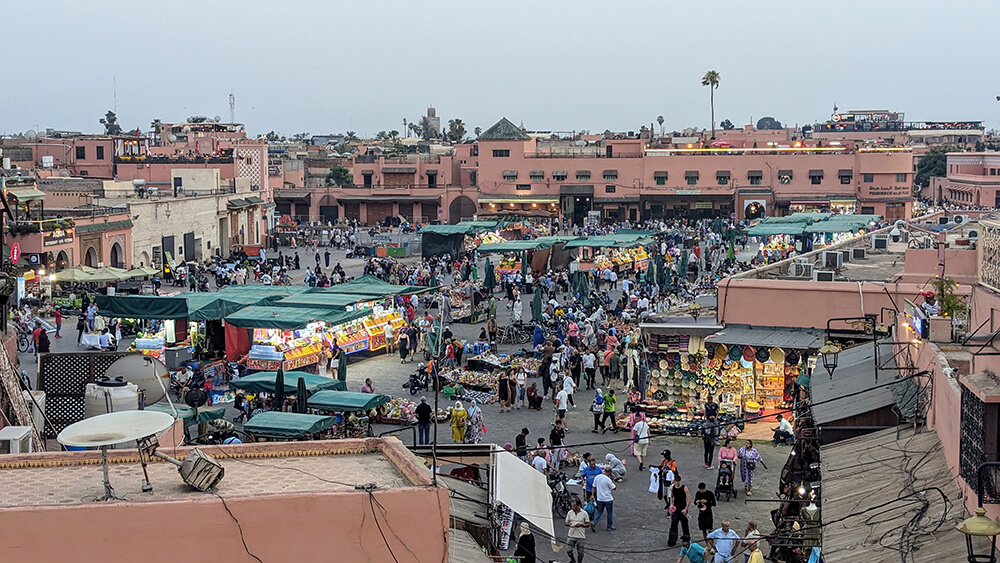
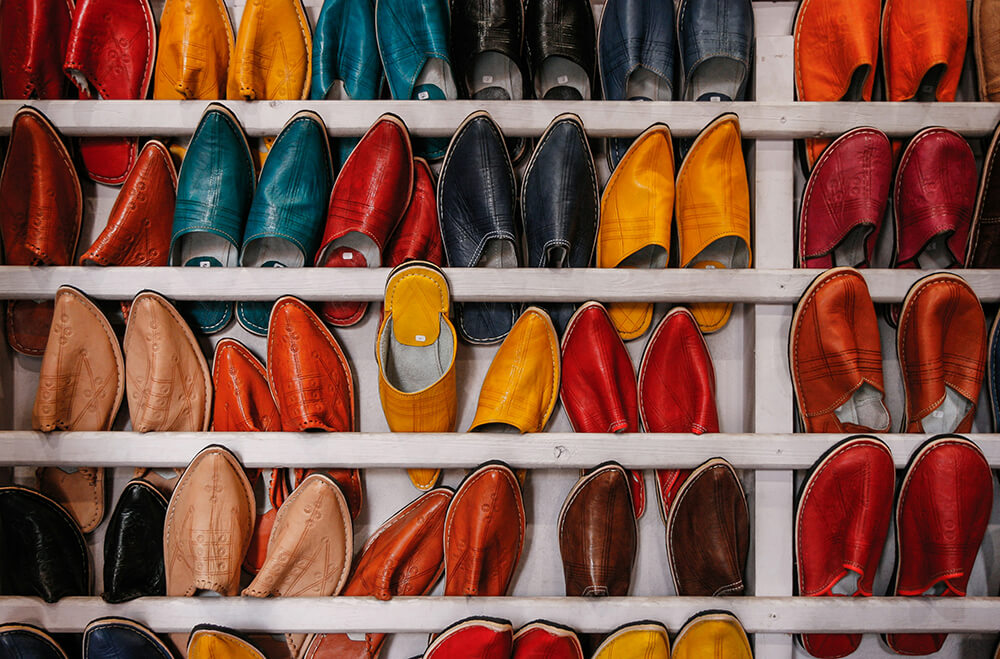
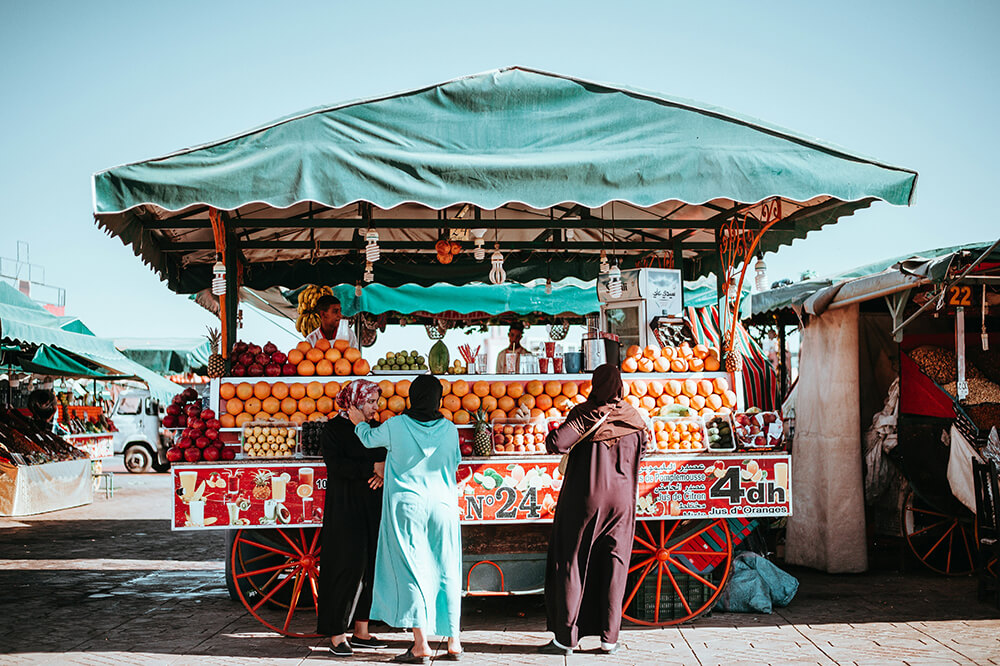
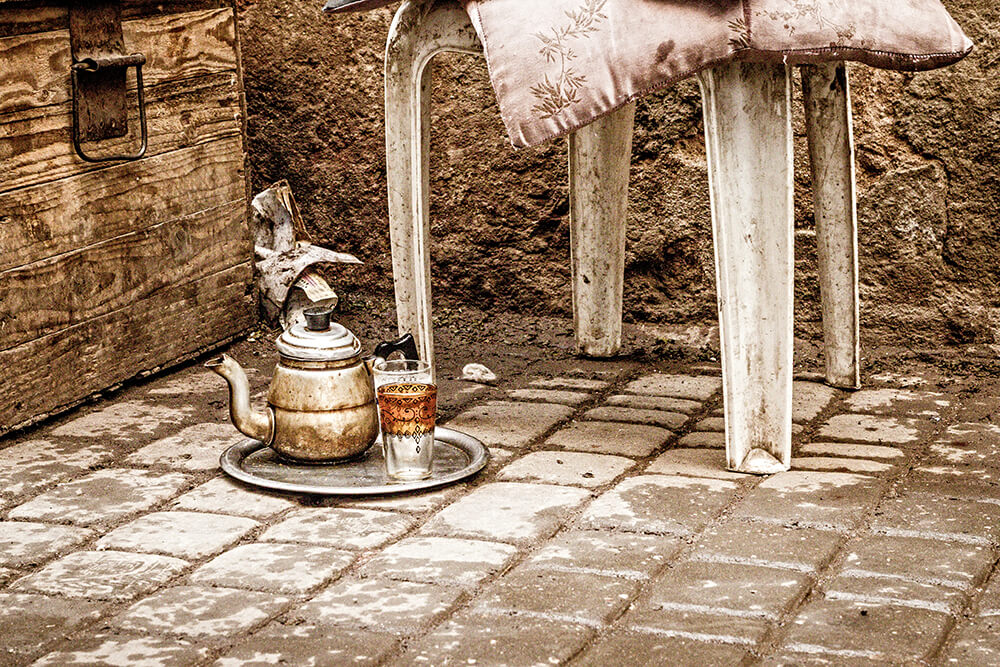
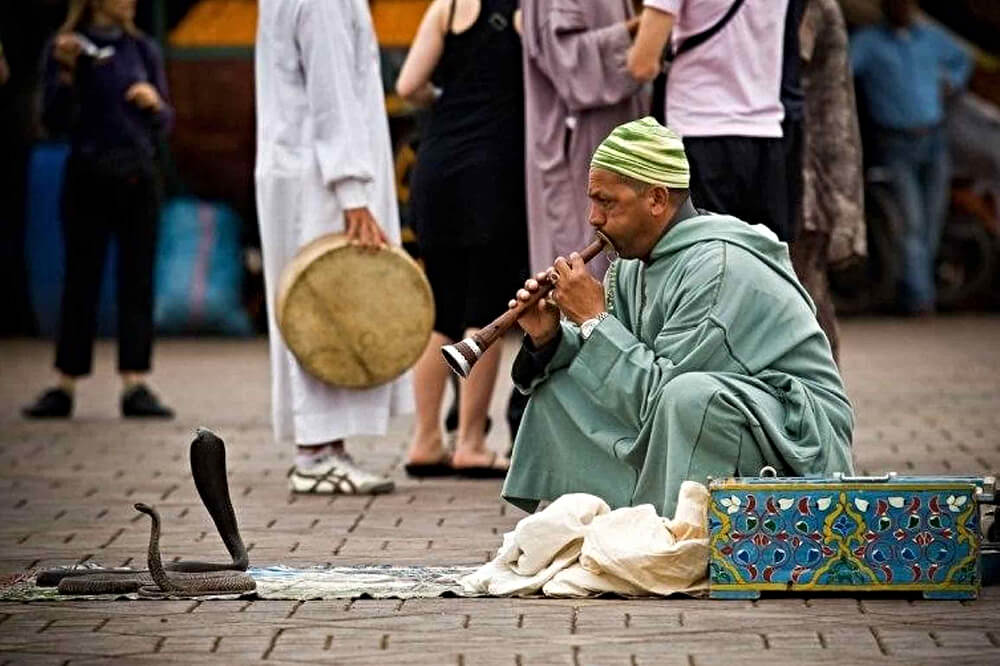
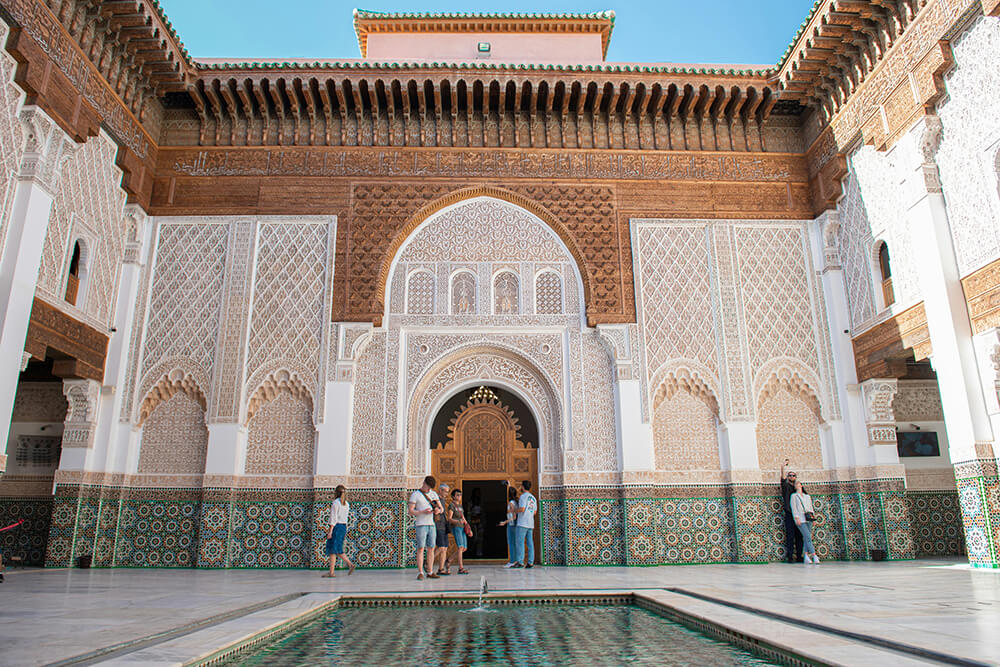
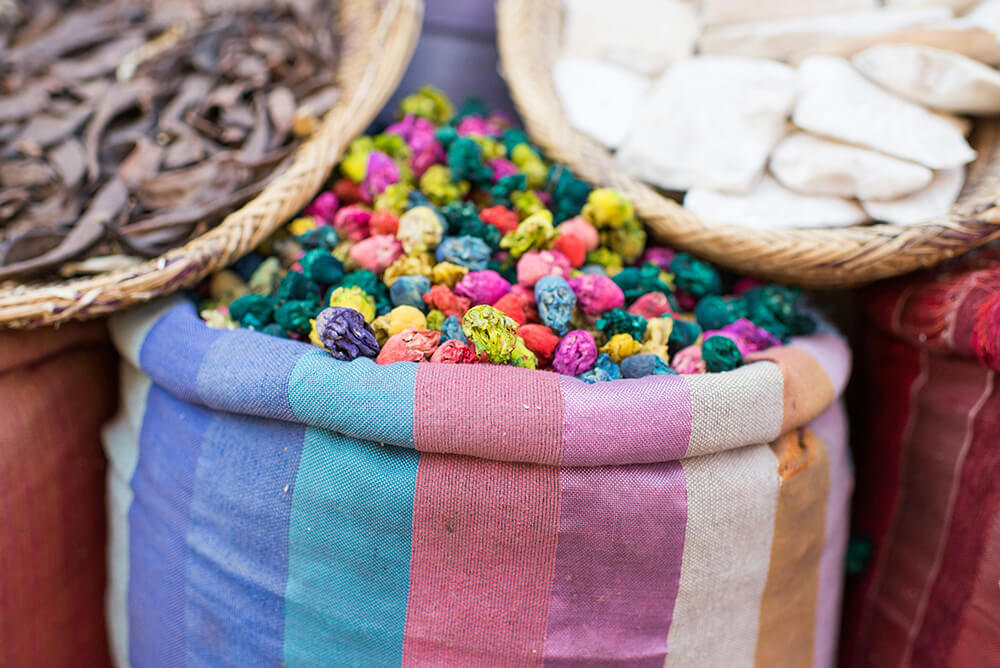
Leaving the hectic square behind, I wandered through the souk. Marrakesh would satisfy even the most insatiable of shopaholics. The labyrinthine passageways are filled with everything from aromatic spices to leather babouches (slippers) and carpets. The main thoroughfares, such as Souq Semmarine, are dedicated to tourist trinkets, but when I wandered off the main paths I found the best shopping and the best prices.
Tired from my explorations, I decided it was time for that quintessential of Moroccan experiences, a visit to the hammam. Most Moroccans will visit a hammam (steam bath) weekly, for a deep cleaning gommage (scrub). Every neighbourhood has a hammam and they come in all shapes, sizes and levels of luxury, from the no-frills public bathhouses to thehigher-price private hammams in fancy hotels. Fortunately for me, my hotel, the gorgeous Le Farnatchi, a luxury riad in the heart of the Marrakech medina, had an award-winning hammam and spa, so I booked myself in. What followed was a wonderful full-body traditional scrub, followed by an aromatic seven-plant ghassoul (mask) and a gentle massage with rosewater. I left feeling pampered, relaxed, squeaky clean and with baby-soft skin.
Less than an hour’s drive from Marrakesh is the Agafay Desert. Not many travellers seem to know about the Agafay Desert, just 30km from Marrakech. It’s a stone desert, so no rolling sand dunes here, but what you will find is moonlike scenery, stunning views of the Atlas Mountains, all the seclusion you could wish for, and a taste of Moroccan desert life. We’d decided on some glamping and Inara Camp didn’t disappoint. Luxurious ‘tents’, incredible dining experiences, and panoramic views out over the desert.
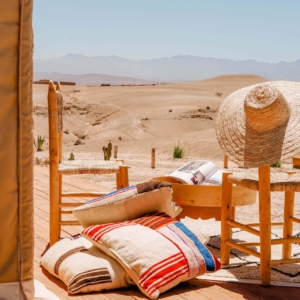
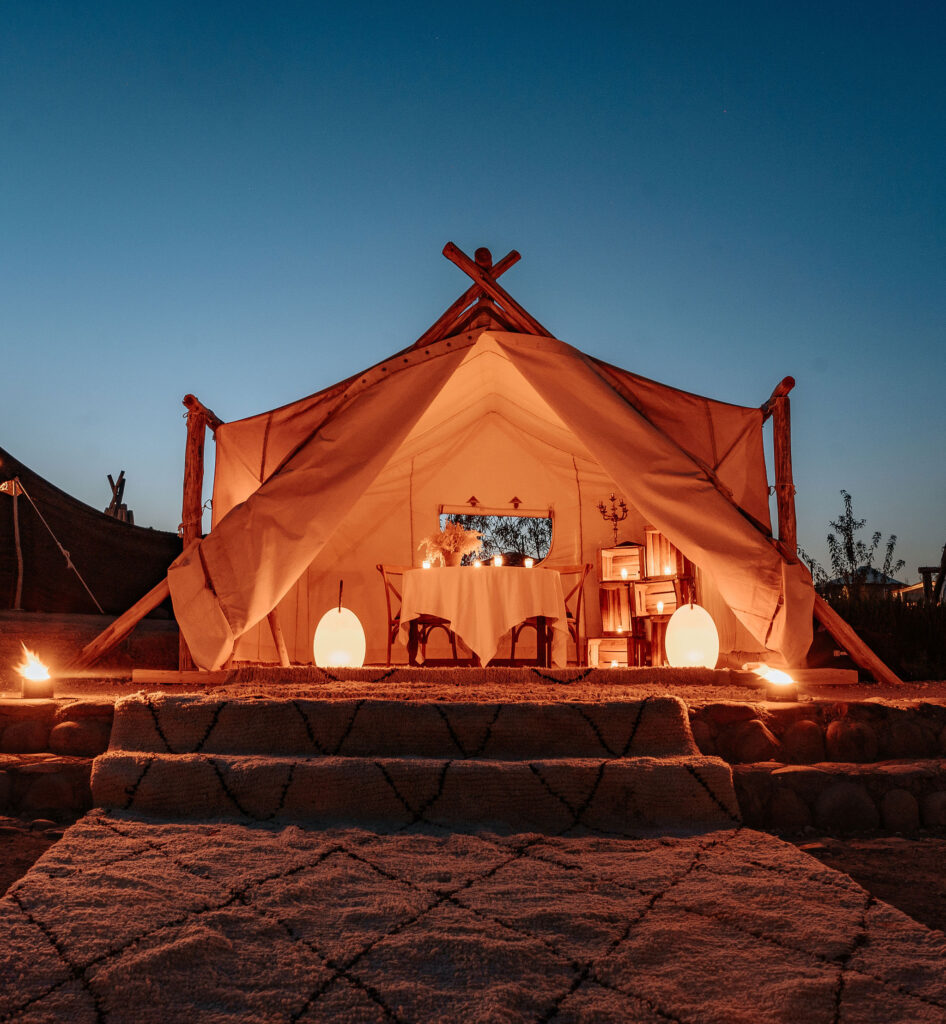
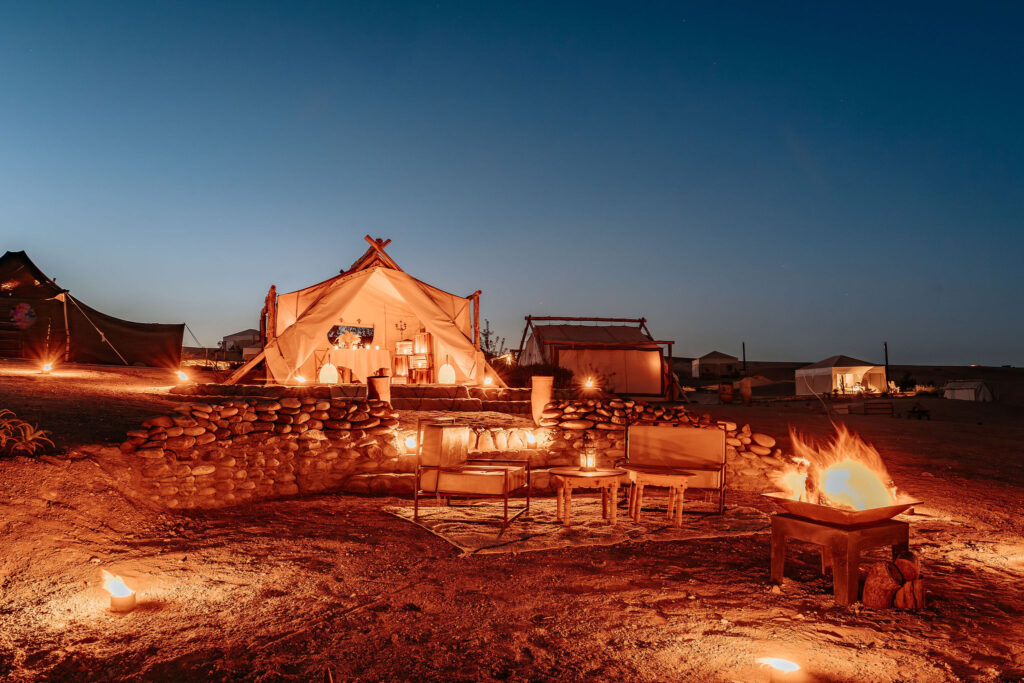
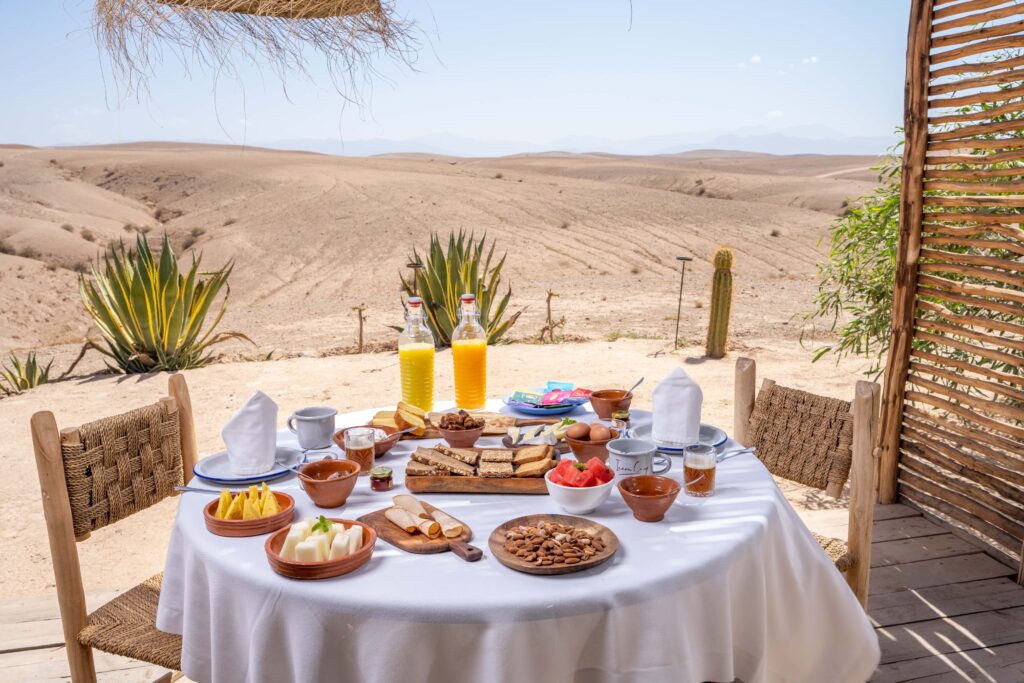
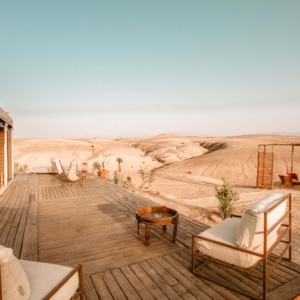
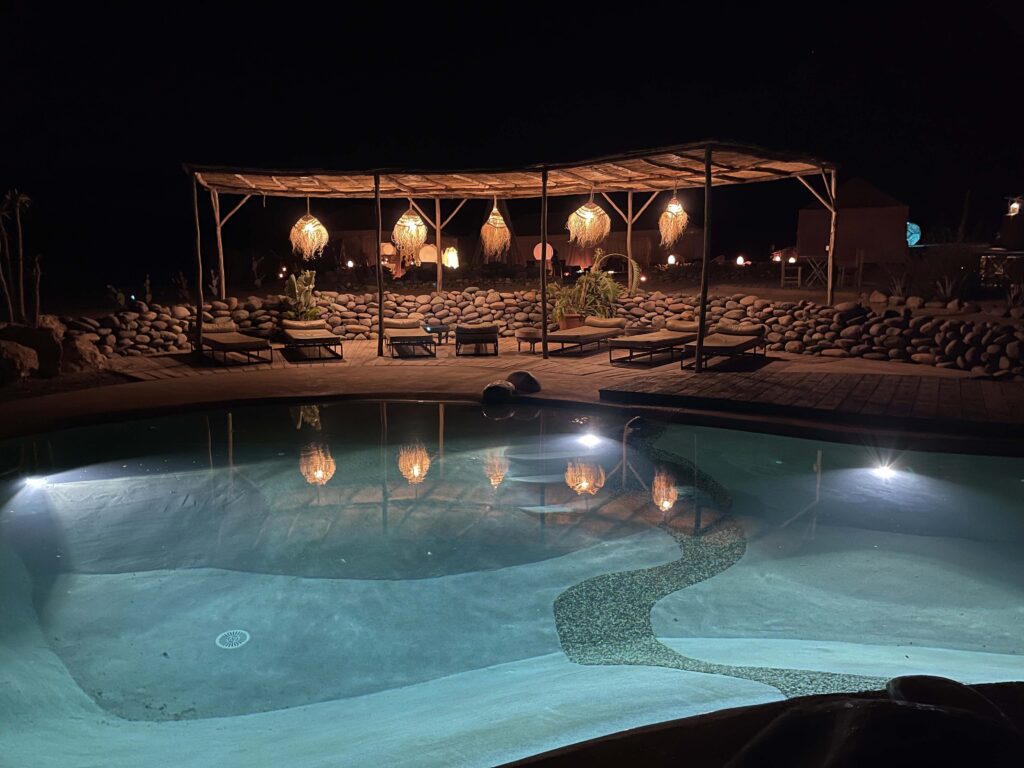
We filled our days with horse, e-bike and camel rides through the desert. My horse was clearly expecting a rider with a bit more skill than I could muster, the e-bikes though were the perfect combination of speed and only a modicum of effort, and the camels carried us out into the desert for a decadent lunch, where we dined in style under a billowing canvas awning, with not another soul to be seen for miles.
Always on the horizon while we were in the desert, were the shadowy silhouettes of the Atlas Mountains. So after a few days of relaxing, we decided it was time to get up close and into them. The Atlas Mountains, home to some of North Africa’s most remote villages,are a hiker’s paradise and run diagonally across the country for around 1,000km. We headed to Imlilin the foothills of the High Atlas Mountains,to Kasbah du Toubkal. Once the home of a feudal caïd (local baron)Kasbah do Toubkal is nowa haven of Berber hospitality and the perfect jumping-off point for a few days of trekking in the mountains.
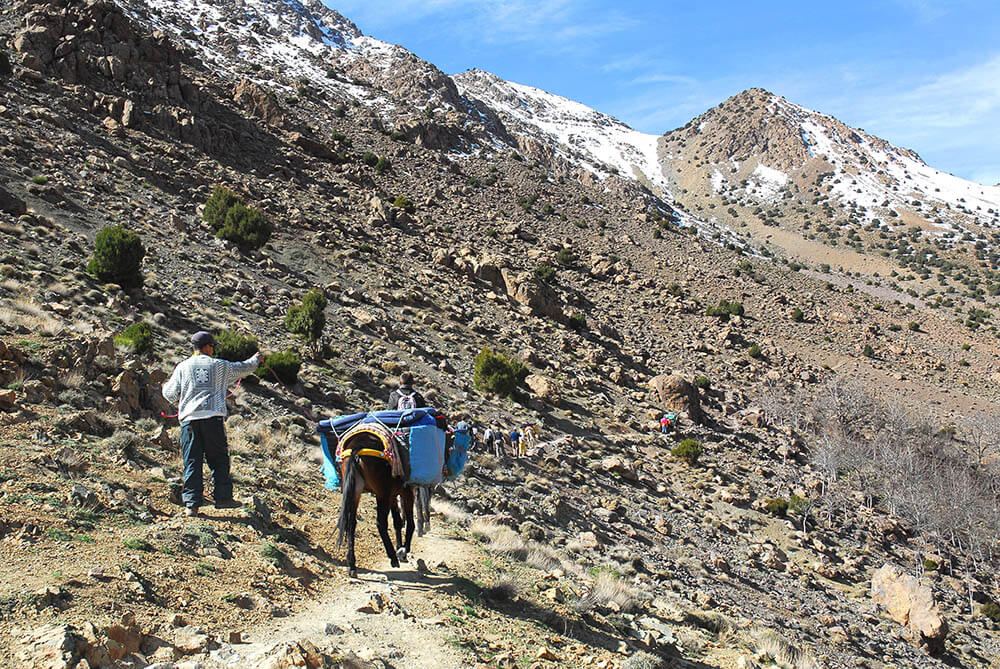
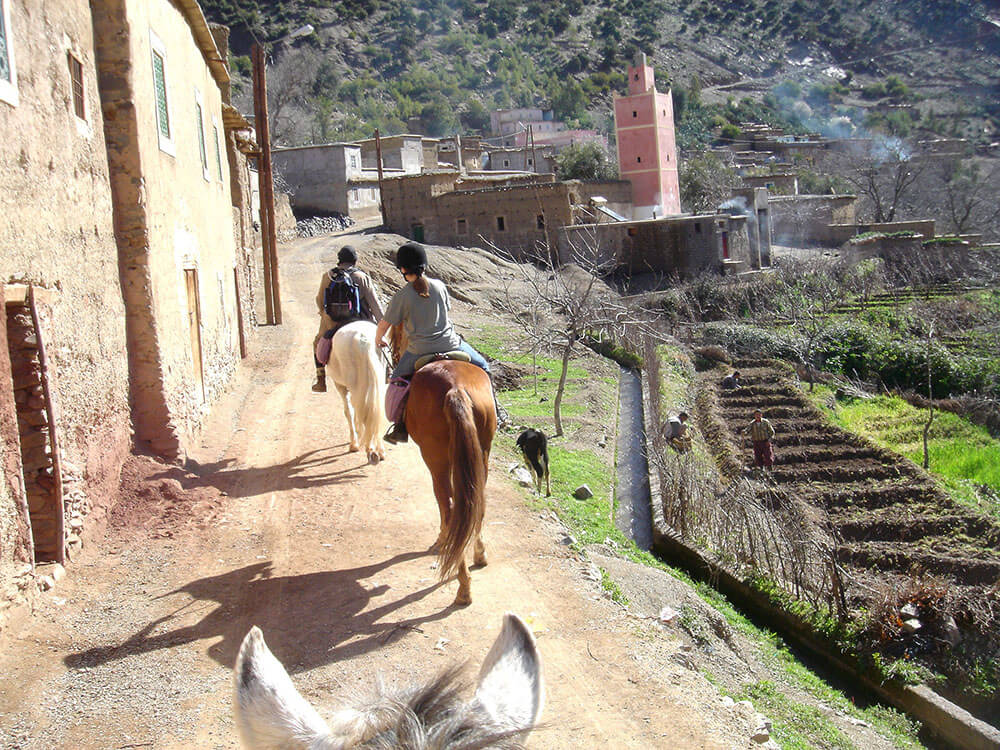
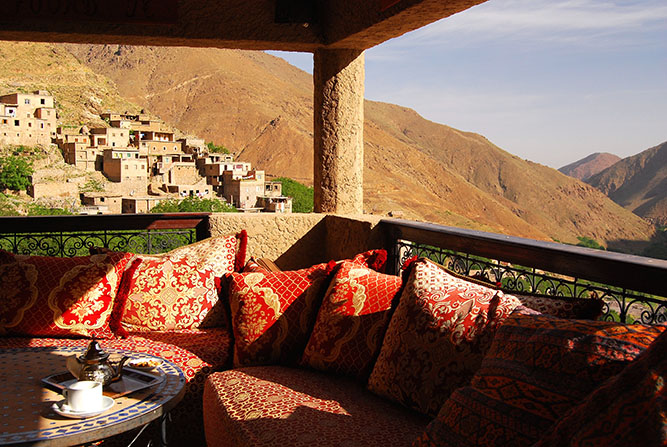
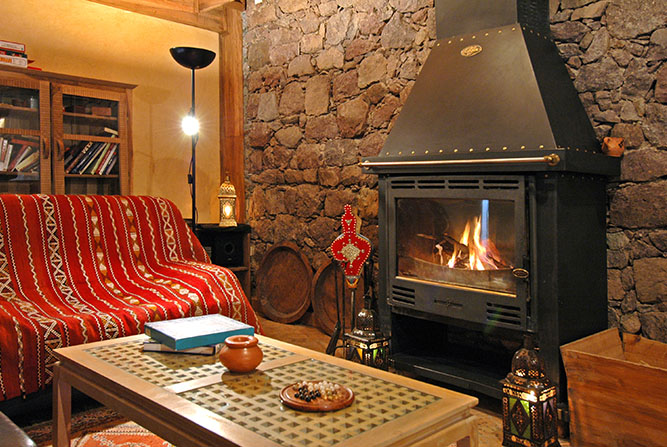
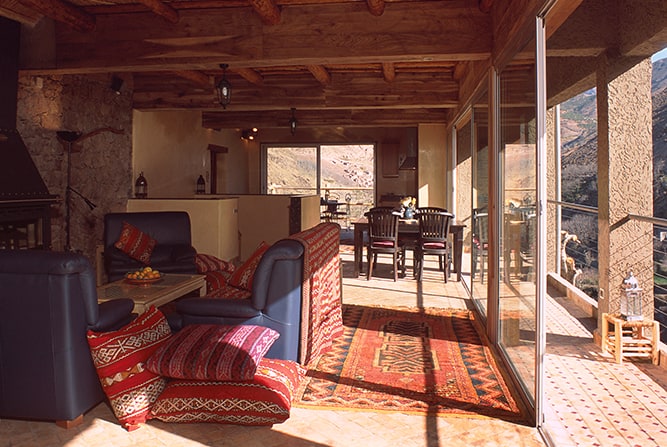
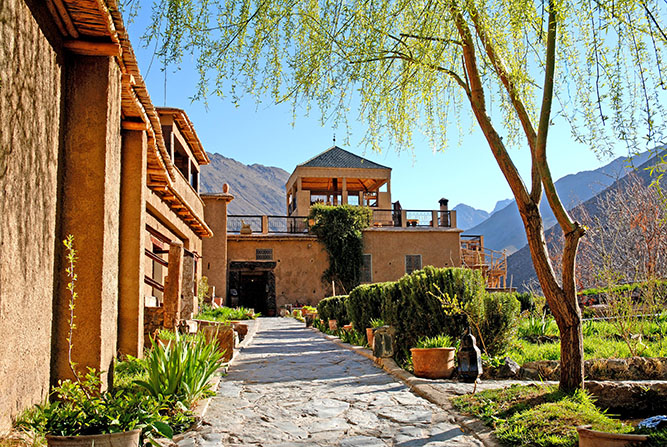
Hiking between, and sleeping in, remote Amazigh (Berber) villages, we passed through isolated valleys, following centuries-old trails. We met local people and saw the devastating damage that had been done to the area by an earthquake, less than 9 months previously; levelling tiny mountain hamlets, destroying homes and killing thousands. Yet, despite the devastation, everywhere we walked, we were welcomed with waves and smiles.
After our days in the mountains, we limped, dusty and dirty to the door ofOlinto, a luxury retreat in the Ouirgane Valley.The doors opened to admit us to the most incredible of secret gardens – meandering stone pathways,abundantflower beds, wrought-iron seats under elaborate pergolas of wisteria and jasmine, groves of silvery-green olive trees. The brainchild of Prince Fabrizio Ruspoli di Poggio Suasa, with only nine private guest pavilions, Olinto is a retreat like no other – a place for ultra-privacy, peace and discreet luxury. Sundowners on green-glazed roof terraces, breakfasts under the pergola, swimming in the jade-coloured pool, and every meal a masterpiece of local flavours and seasonal ingredients.
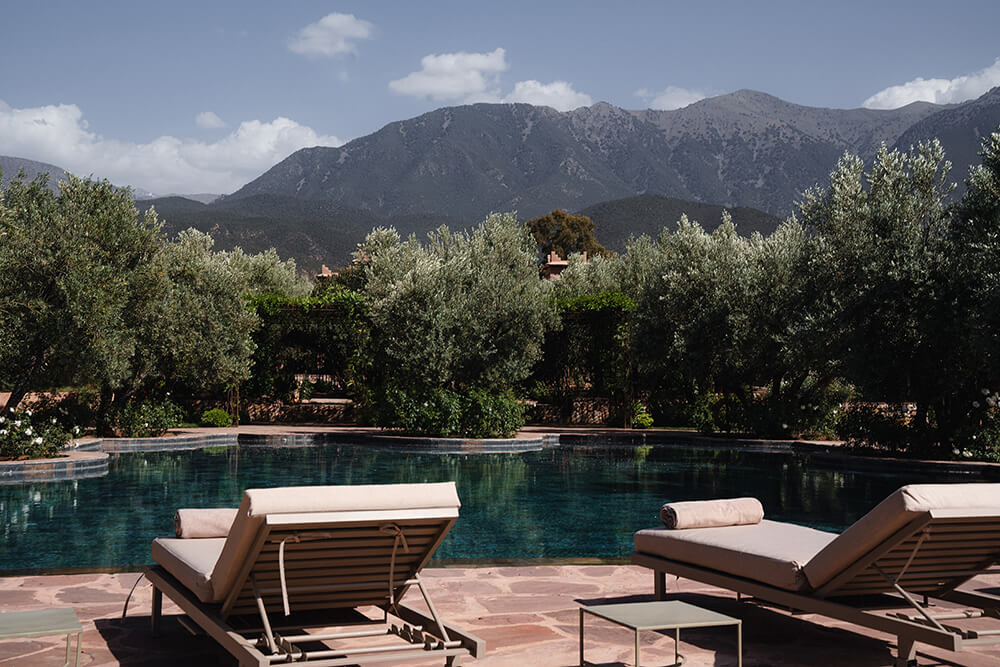
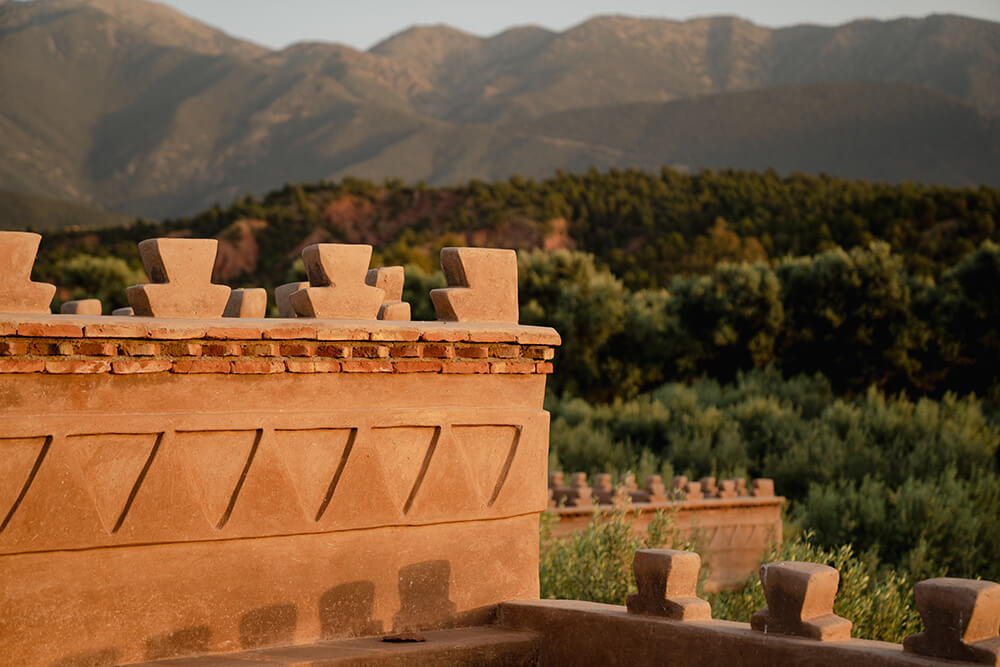
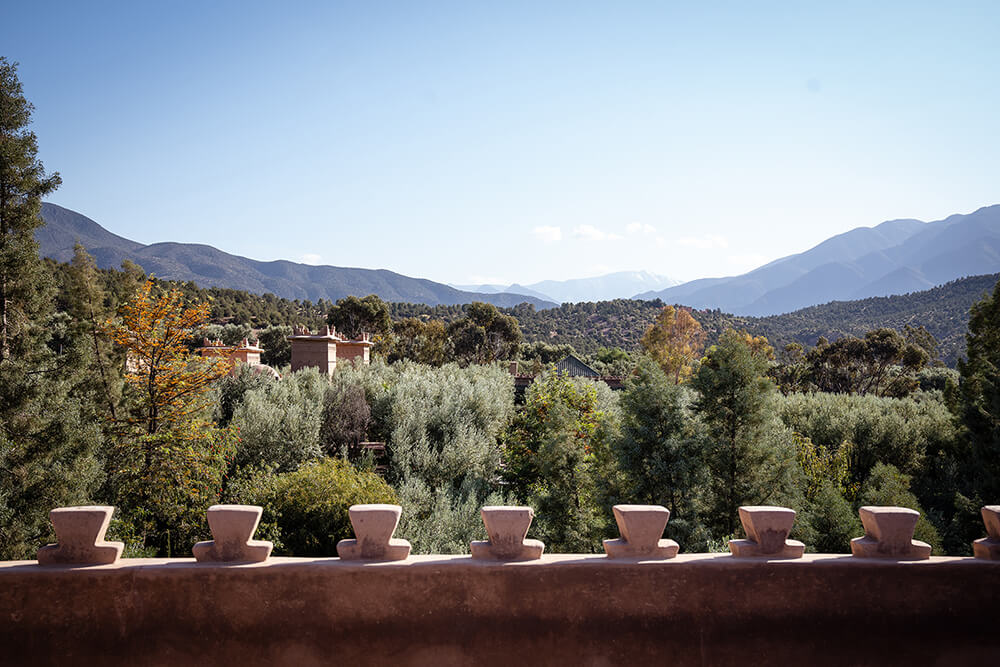
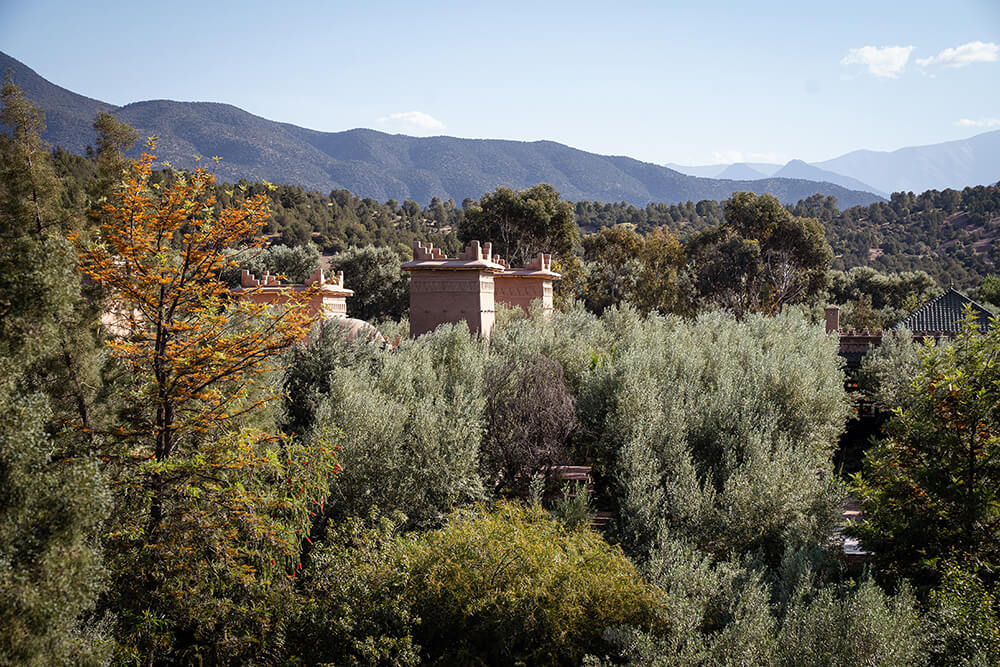
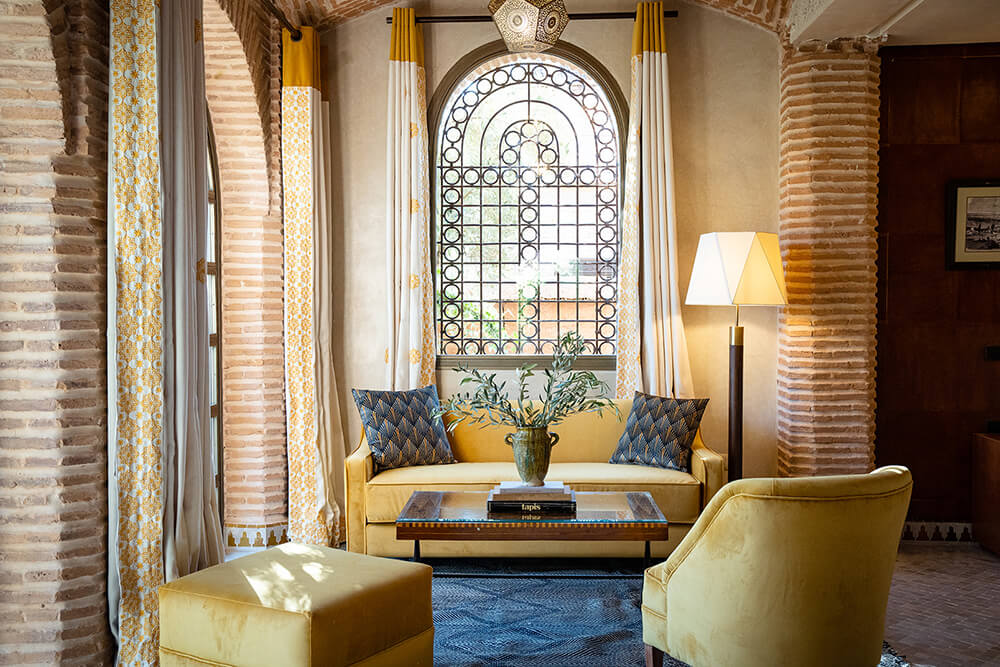
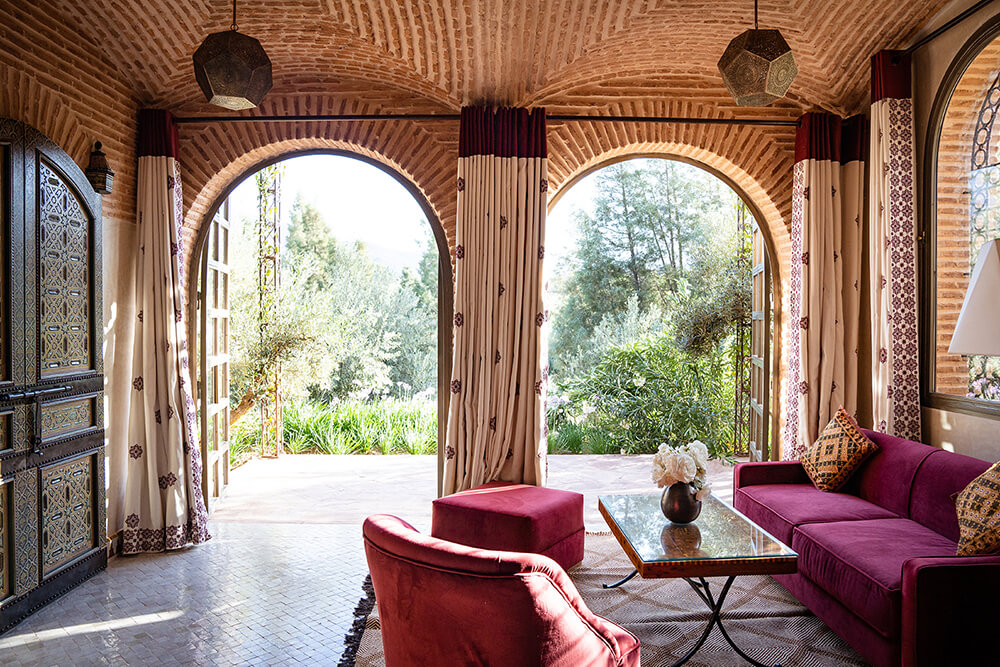
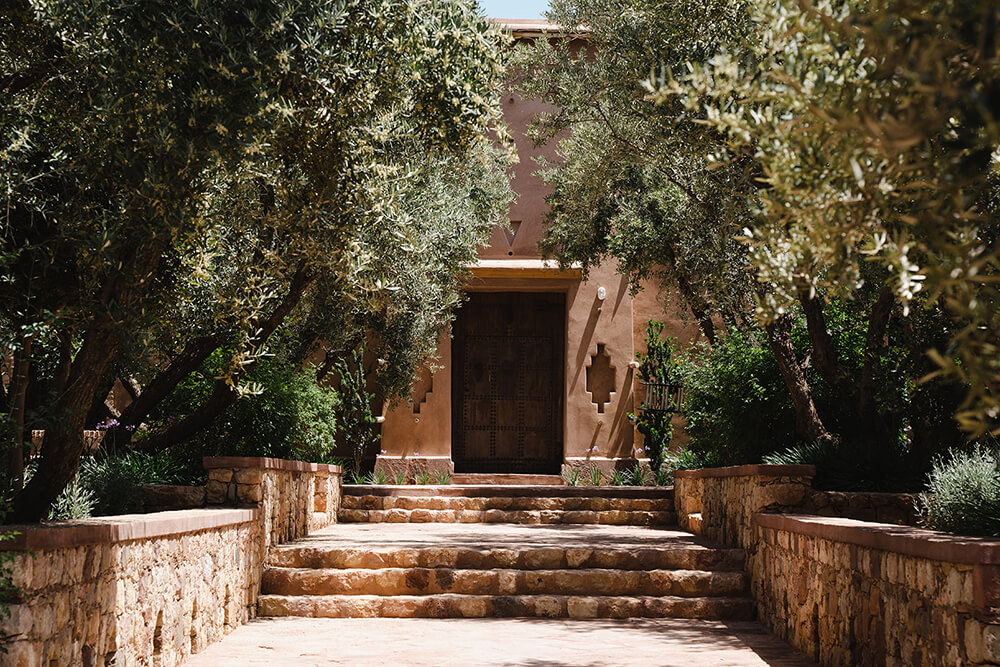
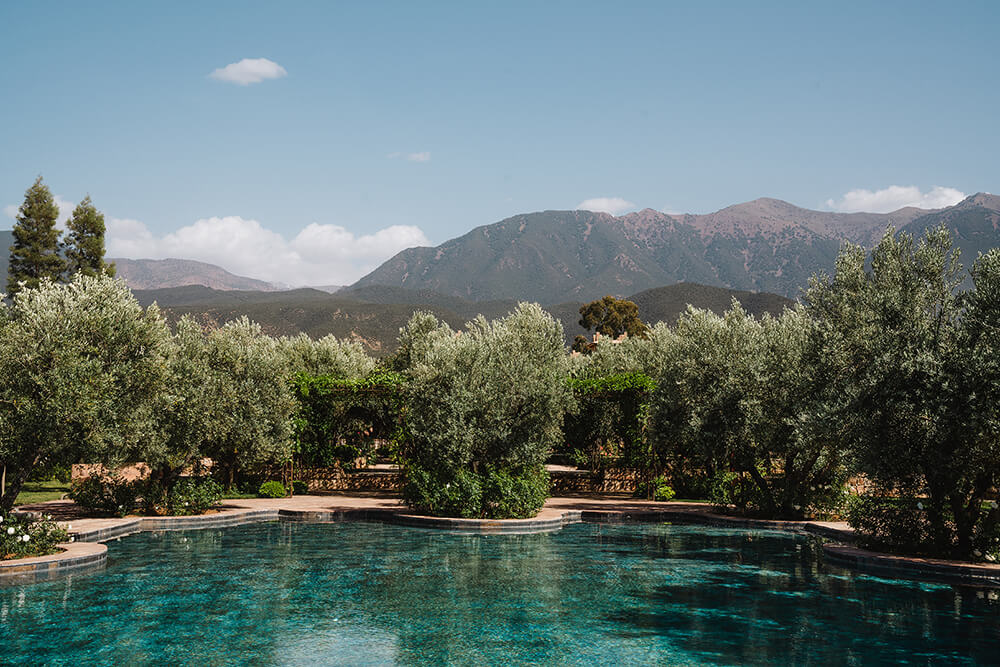
Crossing to the southern side of the Atlas Mountains, our next destination was the Skoura oasis and the 150-year-old, impeccably restored Dar Ahlam, in the UNESCO-protected palmeraie (palm grove). The champagne-coloured kasbah was a haven of manicured lawns and fragrant almond blossoms, that more than lived up to its Arabic translation of ‘House of Dreams’. Leisurely lunches in the garden, rooftop breakfasts and exotic, lantern-lit dinners. We explored the palmeraie, and under the canopy of palms, discovered a patchwork of plots, where farmers toiled, growing olives, pomegranates, almonds, apricotsand figs, watered by an ingenious, centuries-old khettara (underground irrigation system) of canals, levers and locks.
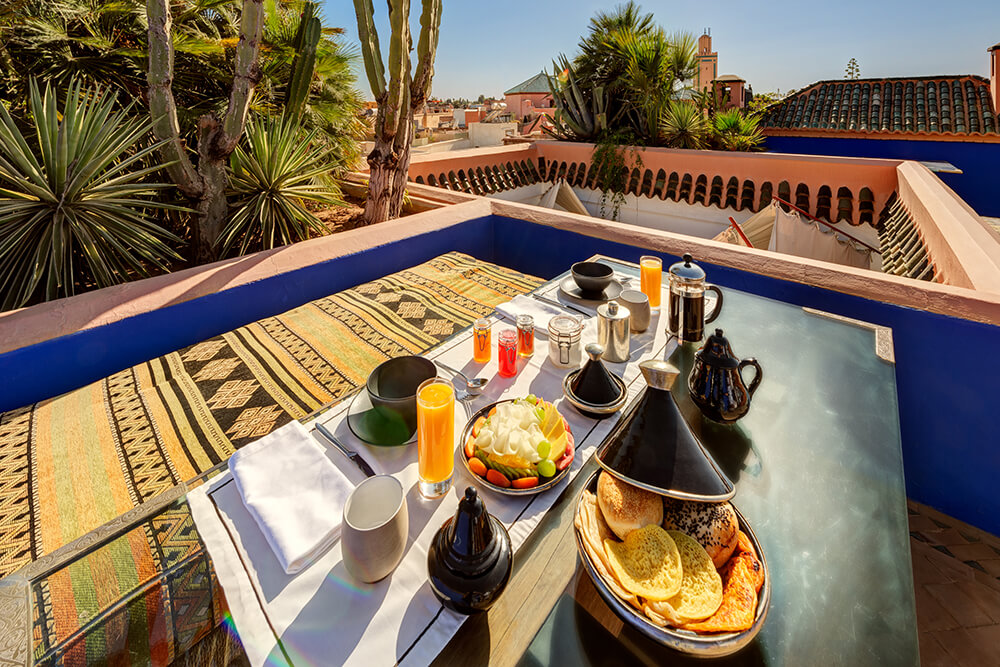
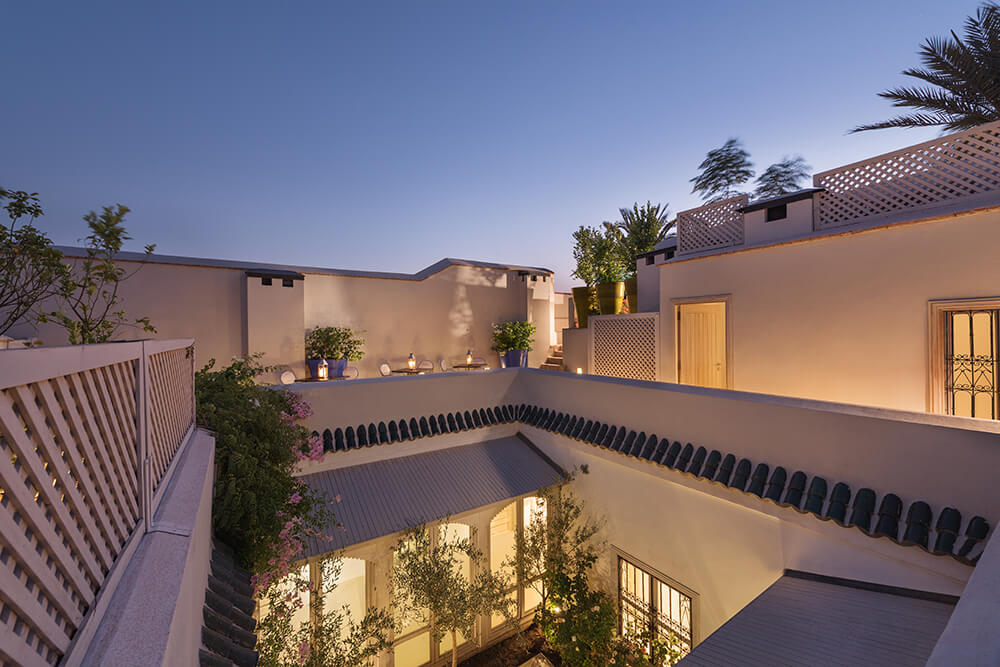
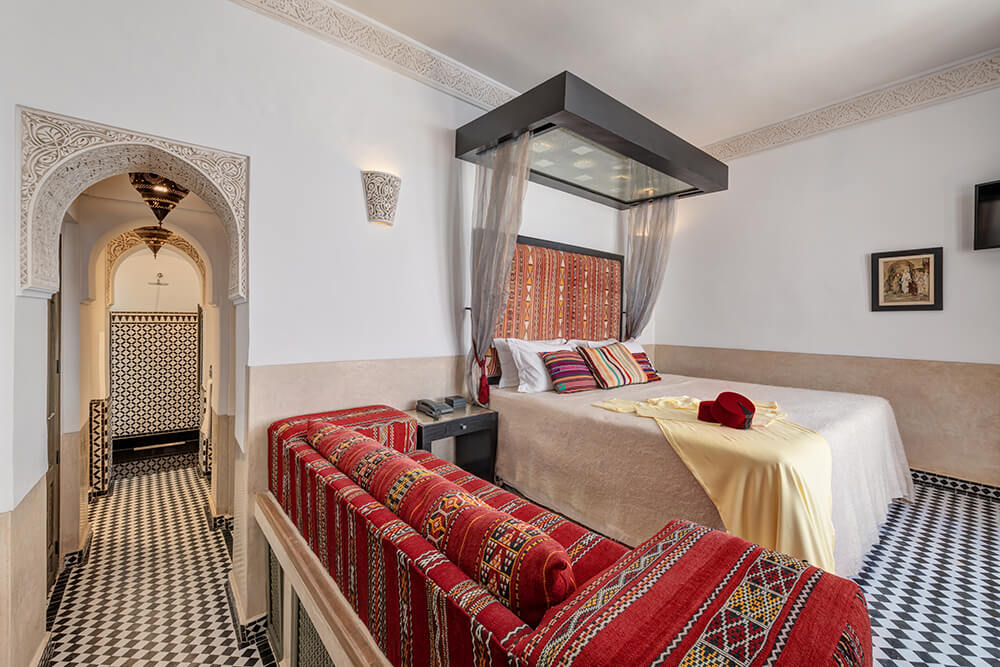
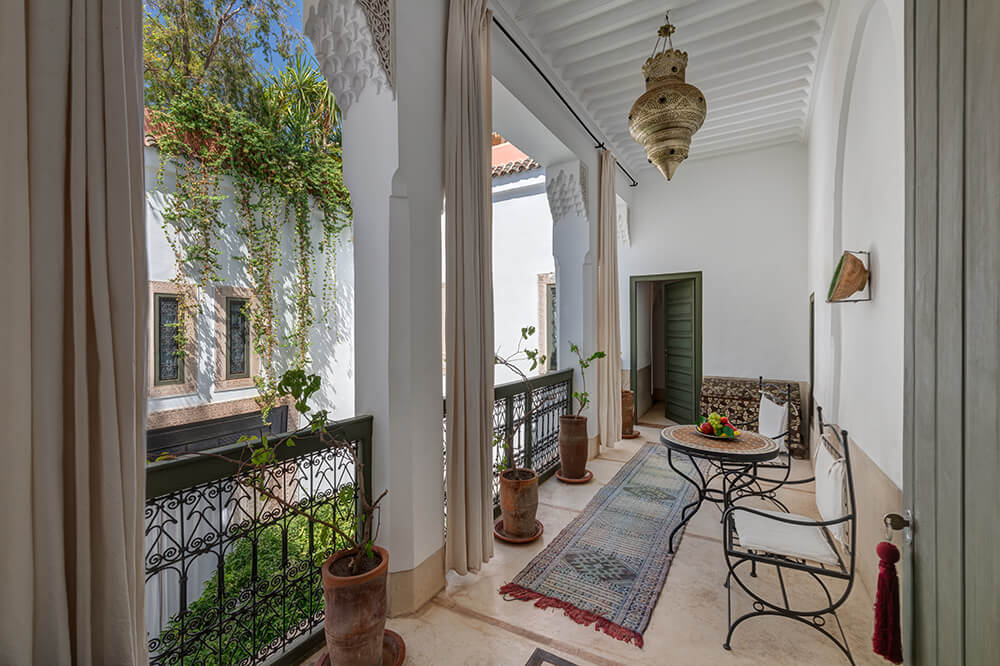
With the last of our days in Morocco fast approaching, we flew to the northern port of Tangier, Morocco’s third largest city,and with a souk that’s over 700 years old. Located on the northernmost tip of Africa, with a dazzling, whitewashed, hillside medina overlooking the Strait of Gibraltar, Tangier is just 14km across the water from Spain.
Founded in the 5th century, Tangier is a hustling, bustling blend of cultures that has been influenced by many peoples throughout its history. Jews, Muslims, and Christians coexisted here for decades, and Spanish was the common tongue – a colourful history of spies, outlaws, outcasts, and bohemians, with decades worth of writers, pop stars and eccentrics flocking to the city’s more than 800 cafes.
I walkedthe whitewashed, hillside medina with its higgledy-piggledy maze of narrow streets and small squares. I explored the Grand Socco and the Petit Socco markets, along the crowded streets, with their aroma of spices, shopped for jewel-coloured tea glasses, took strolls along the corniche, ate fresh seafood at beachside restaurantsand made small talk with the locals. At nightIretired to Villa Augustine, in Tangier’s Marshan district, with its stylish interiors created by designer and hotelier Willem Smit, and spent my final evenings in Morocco looking out over sweeping rooftop sea views.
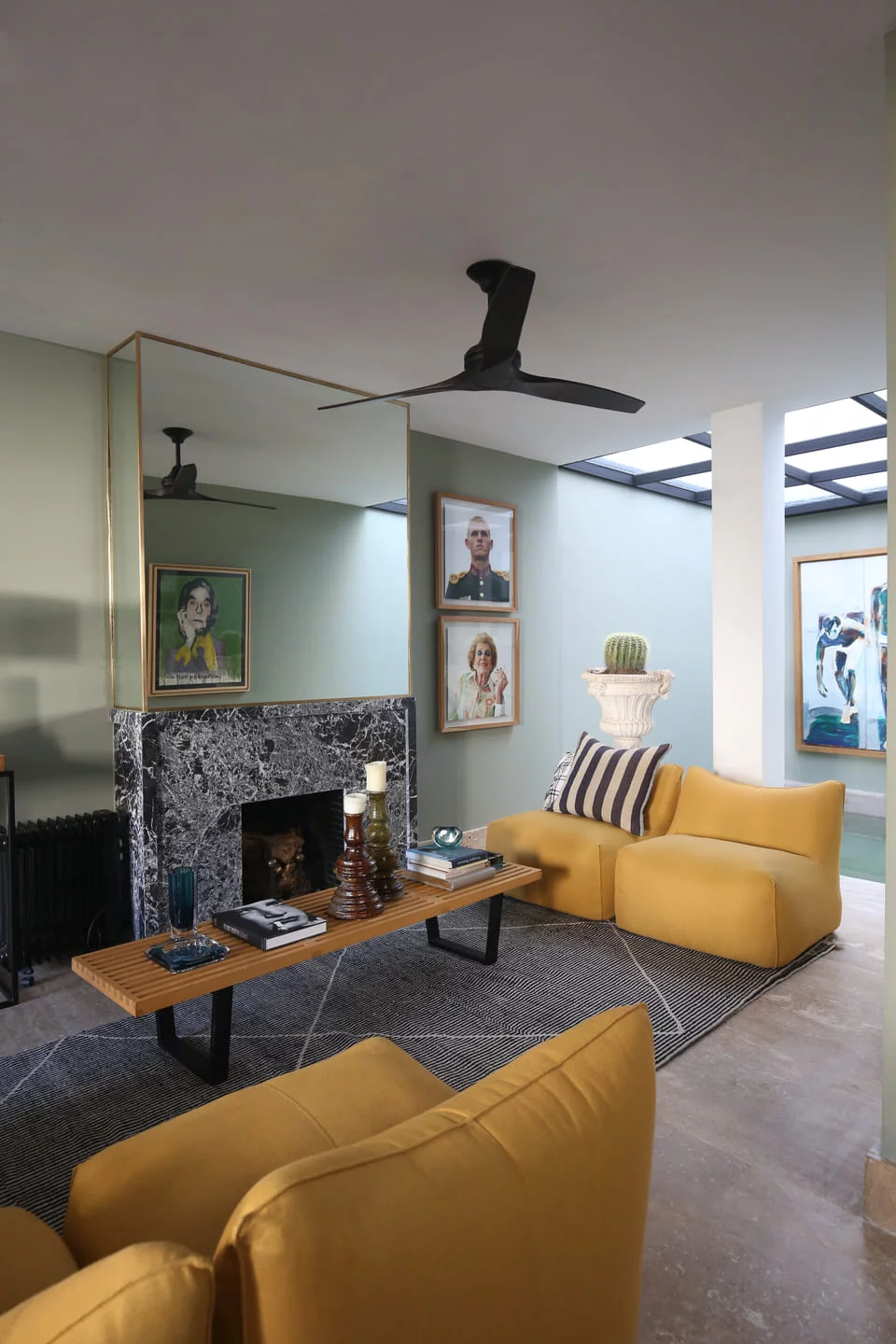
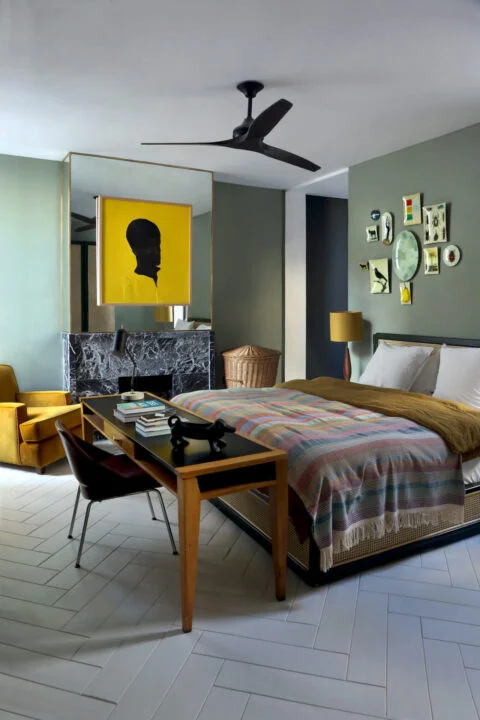
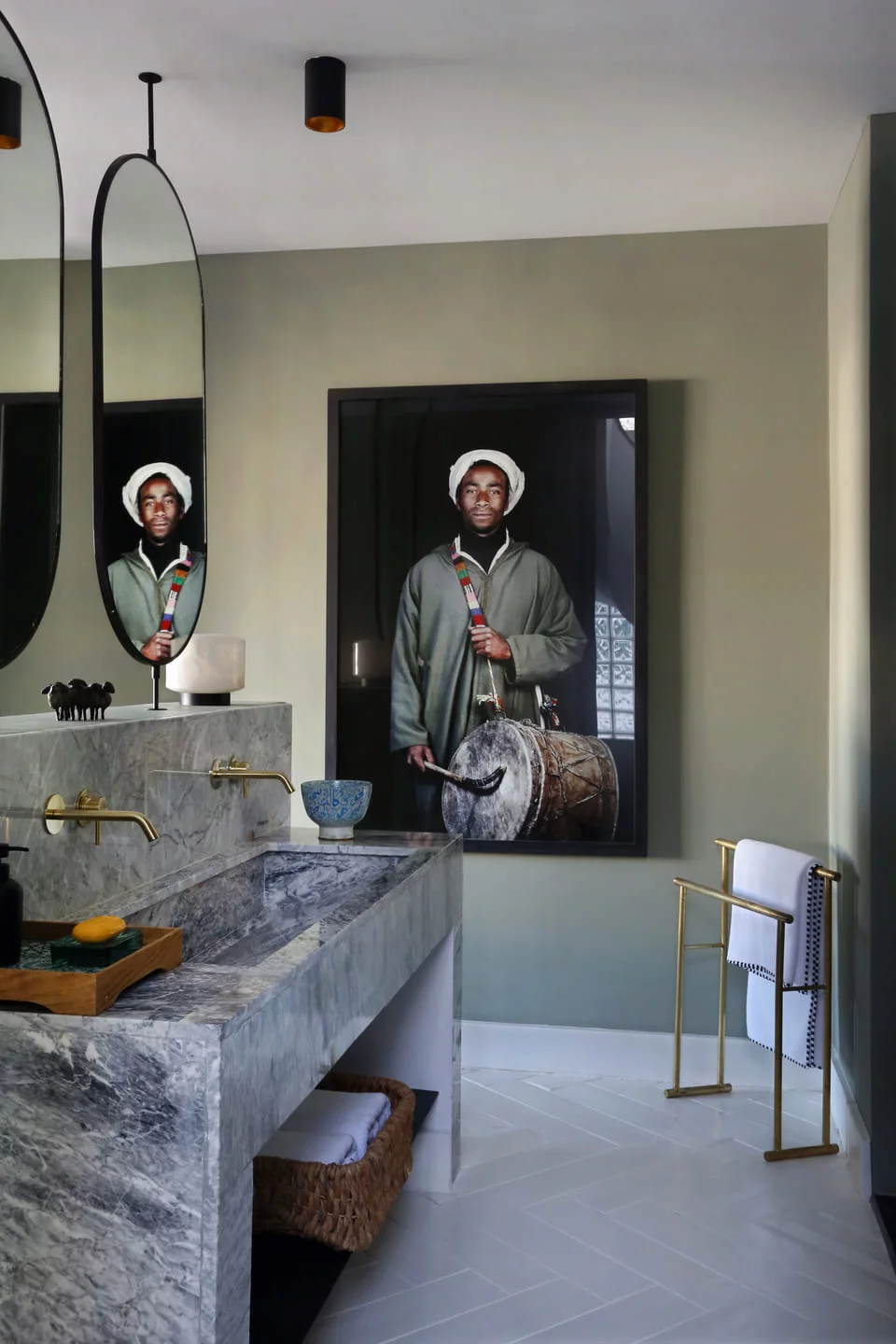
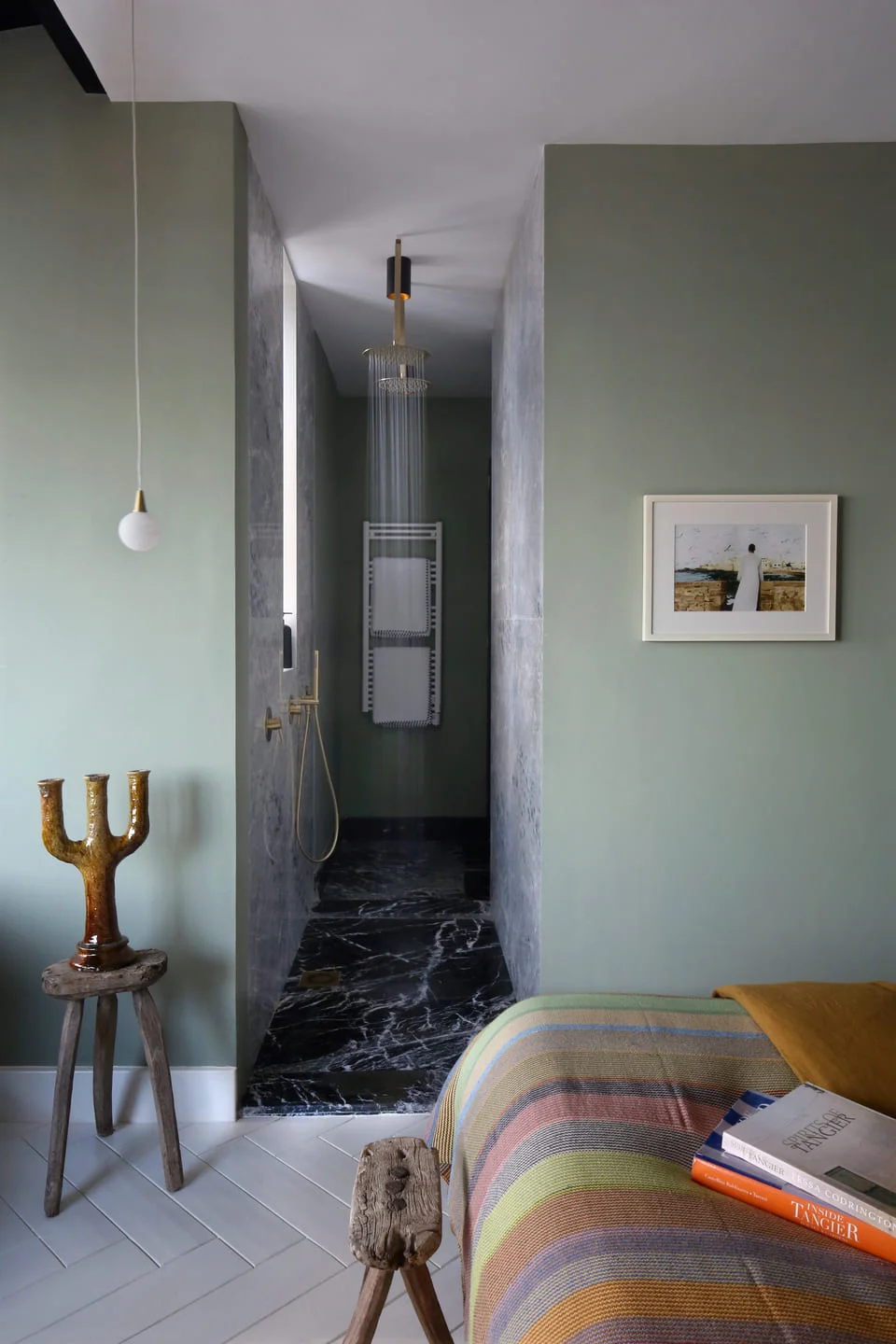
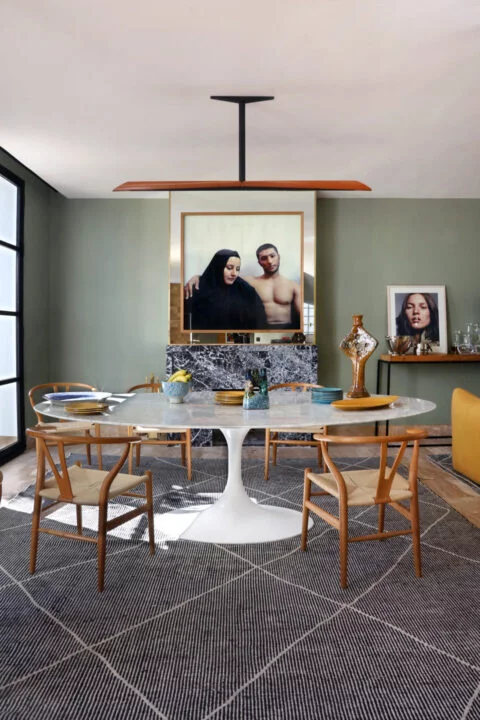
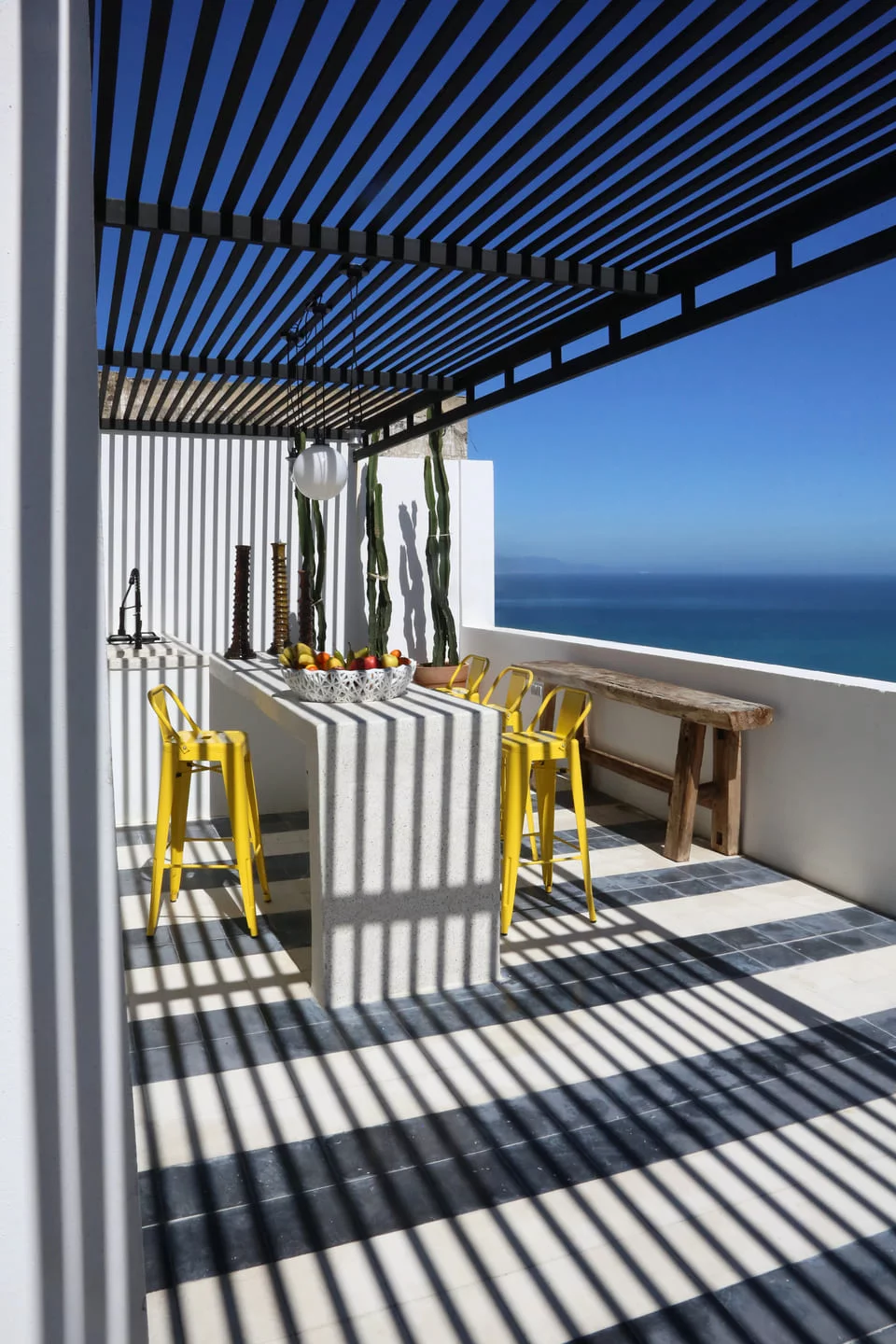
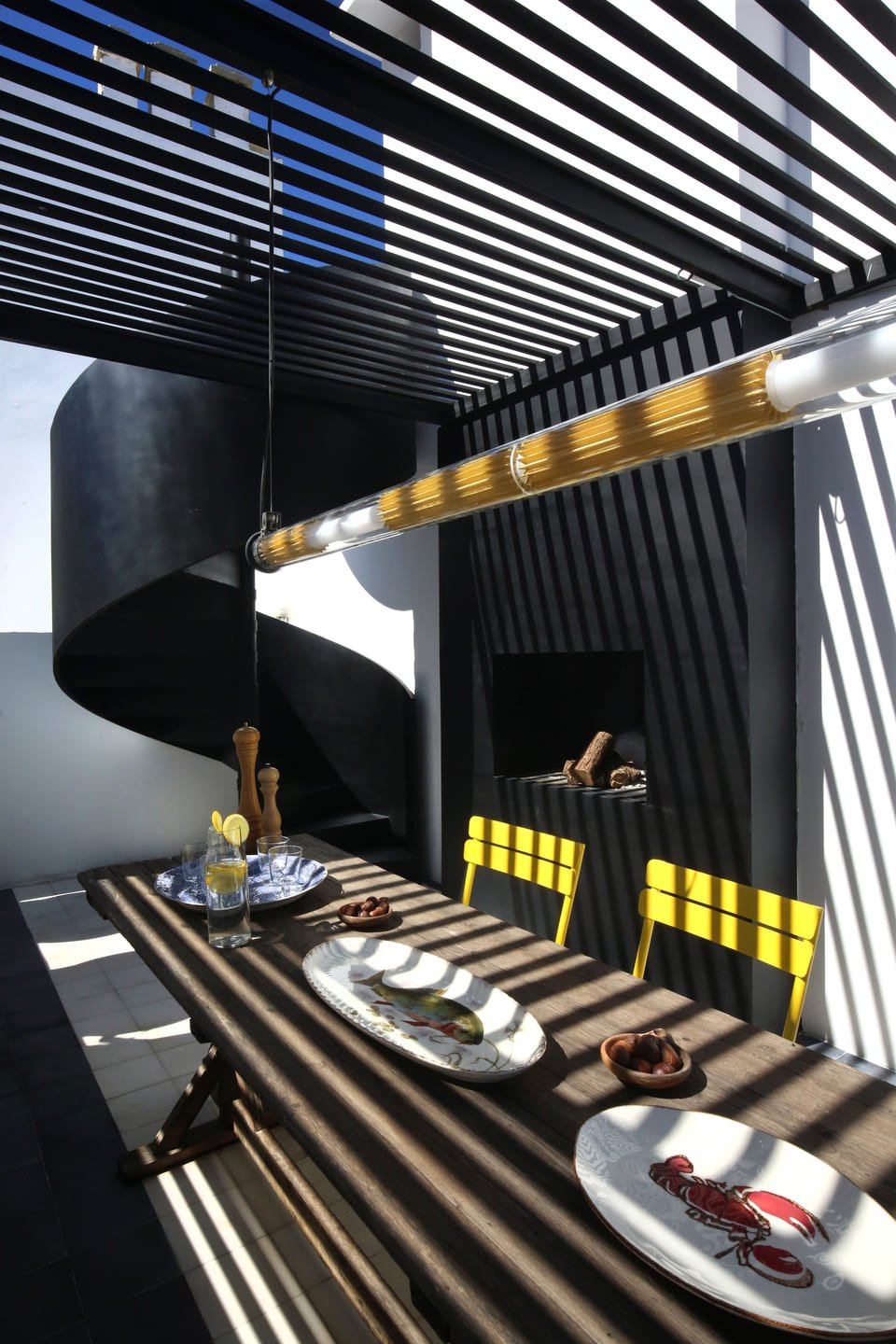
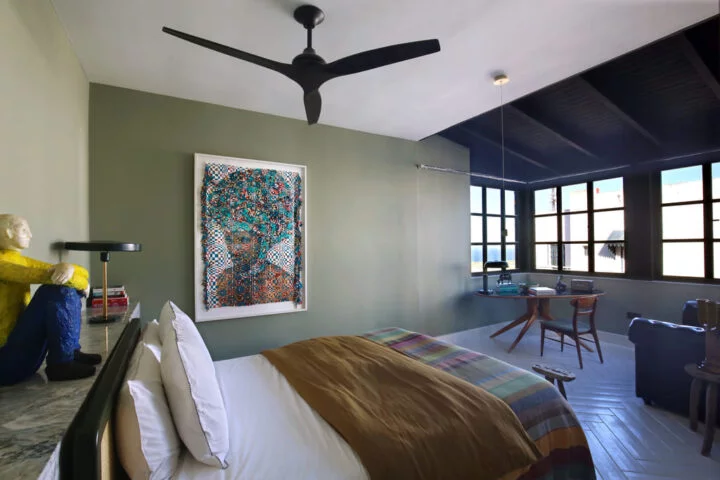
Morocco with its enchanting blend of history, architecture, culture and cuisine, would take weeks, months or even years to properly explore. Whether trekking in the mountains, wandering through the medinas, or experiencing the unique landscapes of the desert, Morocco captivates at every turn and is a place I’m longing to return to.
Planning Your Travels:
With so much to see and do, planning a visit to Morocco canbe intimidating. This is where bespoke travel company Wix Squared can help. Founder Alex Wix, who’s been named by Condé Nast Traveller and Robb Report as a top travel specialist, has been based in Marrakesh for years, making her a Moroccan expert, and giving her that extra insider expertise for planning the perfect trip. https://wixsquared.com/
For accommodation:
Fez – Palais De Fez https://www.palais-de-fes.com/
Marrakech – Le Farnatchi https://lefarnatchi.com/
Agafay Desert – Inara Camp https://www.inaracamp.com/
Atlas Mountains – Kasbah du Tubkalhttps://www.kasbahdutoubkal.com/ and Olinto https://olinto.net/
SkouraOasis – Dar Ahlam https://www.darahlam.com/
Tangier – Villa Augustine https://houseofaugustine.com/
